Undergraduate Student Work
From re-imagining mixed-use residential on Toronto's King Street to celebrating cultural identity, our bachelor of architectural science (BArchSc) students are designing and redefining a more sustainable built environment for the future.
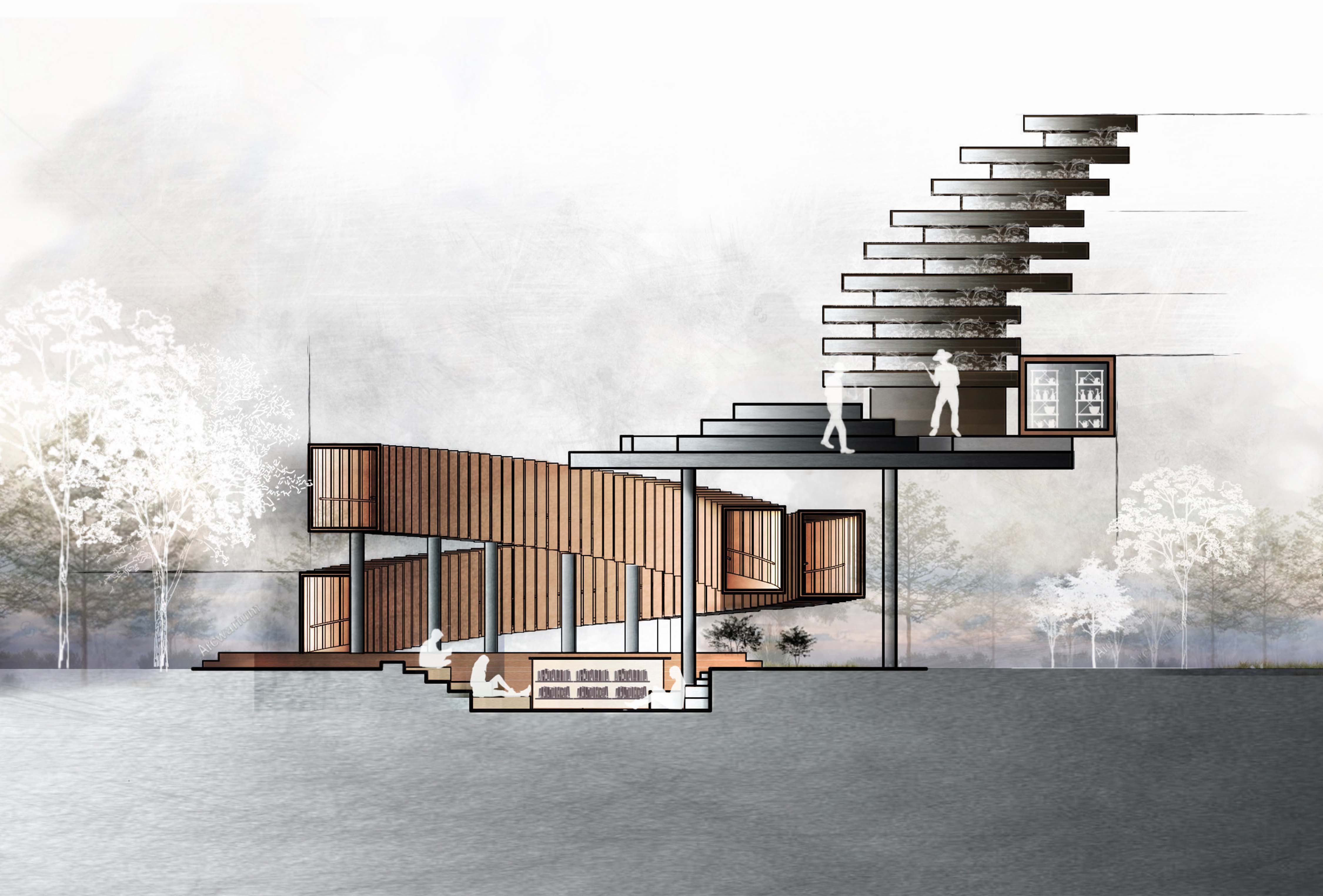
Connecting Concept Cities
By: Casey Huynh and Andrea Trapane
This connection encourages physical activity, a connection to nature, and opportunities for community involvement. The inner space of the connection has a private and tranquil atmosphere which draws inspiration from landscapes all over the world. It is adaptably laid out to hold both big gatherings for lectures and receptions as well as intimate outdoor readings, peaceful study, and individual reading nooks. This connection strives to redefine metropolitan living by promoting health and wellbeing.
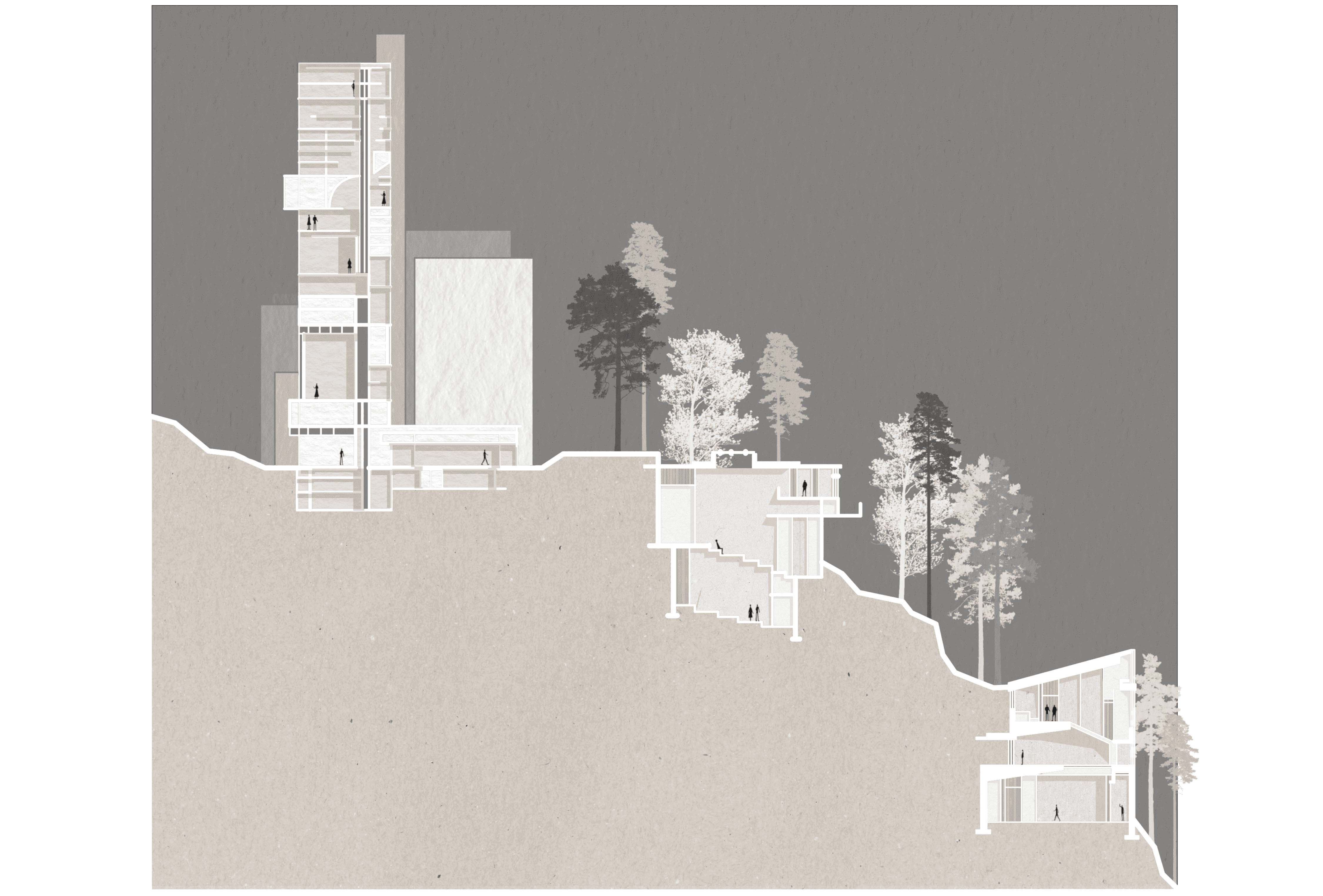
Covert: A Concept City
By: Angelica Nguyen-Tran
This city is one that houses two different worlds; one with towering structures that are built from the ground upwards and one that is more hidden-- tucked away under the trees with its buildings protruding outwards from the earth. The city is divided by the land beneath it, sloping downwards past the urban section, creating a threshold into the forest.
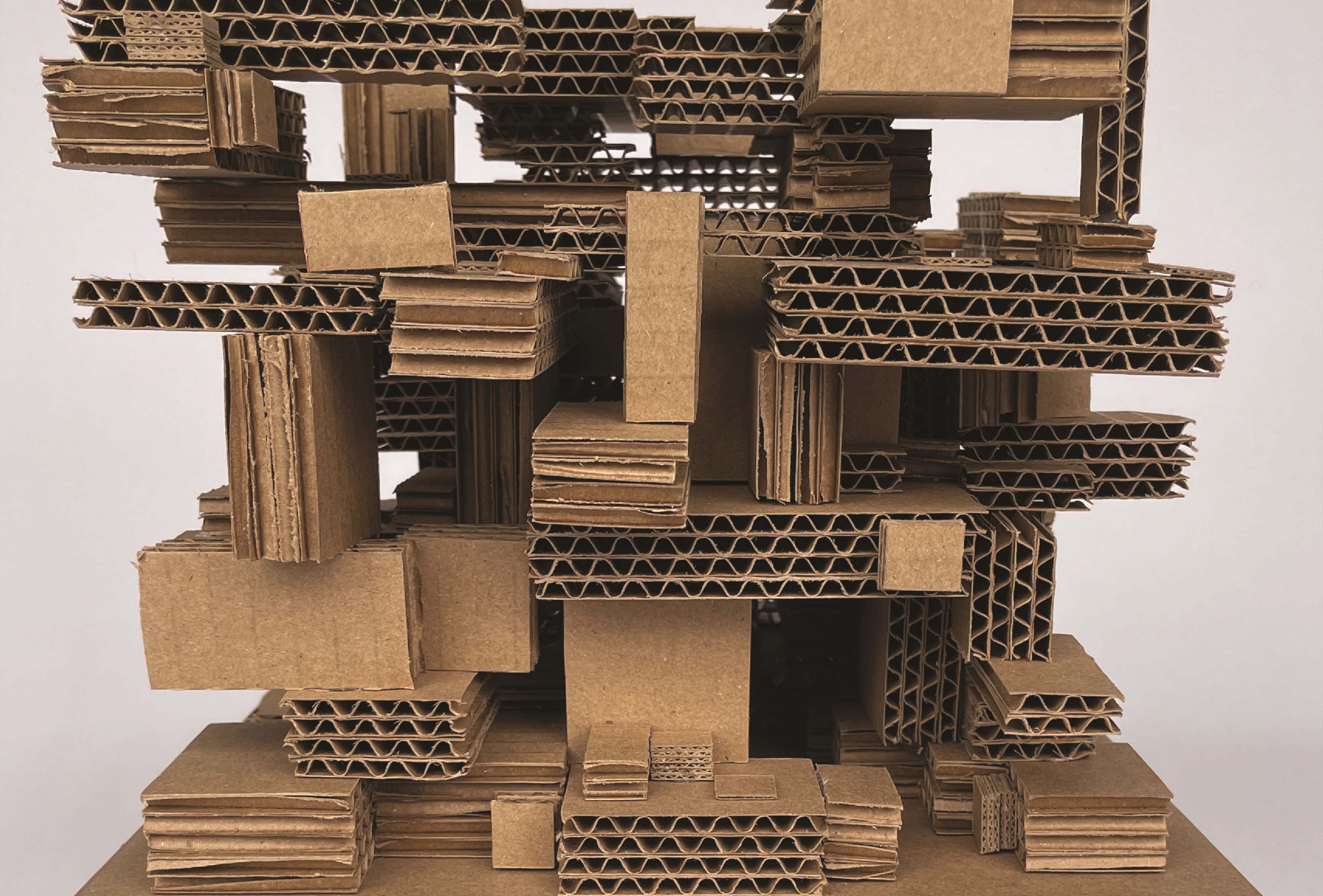
Density
By: Veronica Parks
This concept city focuses on density and space. Shown by the compact boxes, and the contrasting open space for air and light. It is an exploration of how minimal land space could be used while keeping elements of a city.
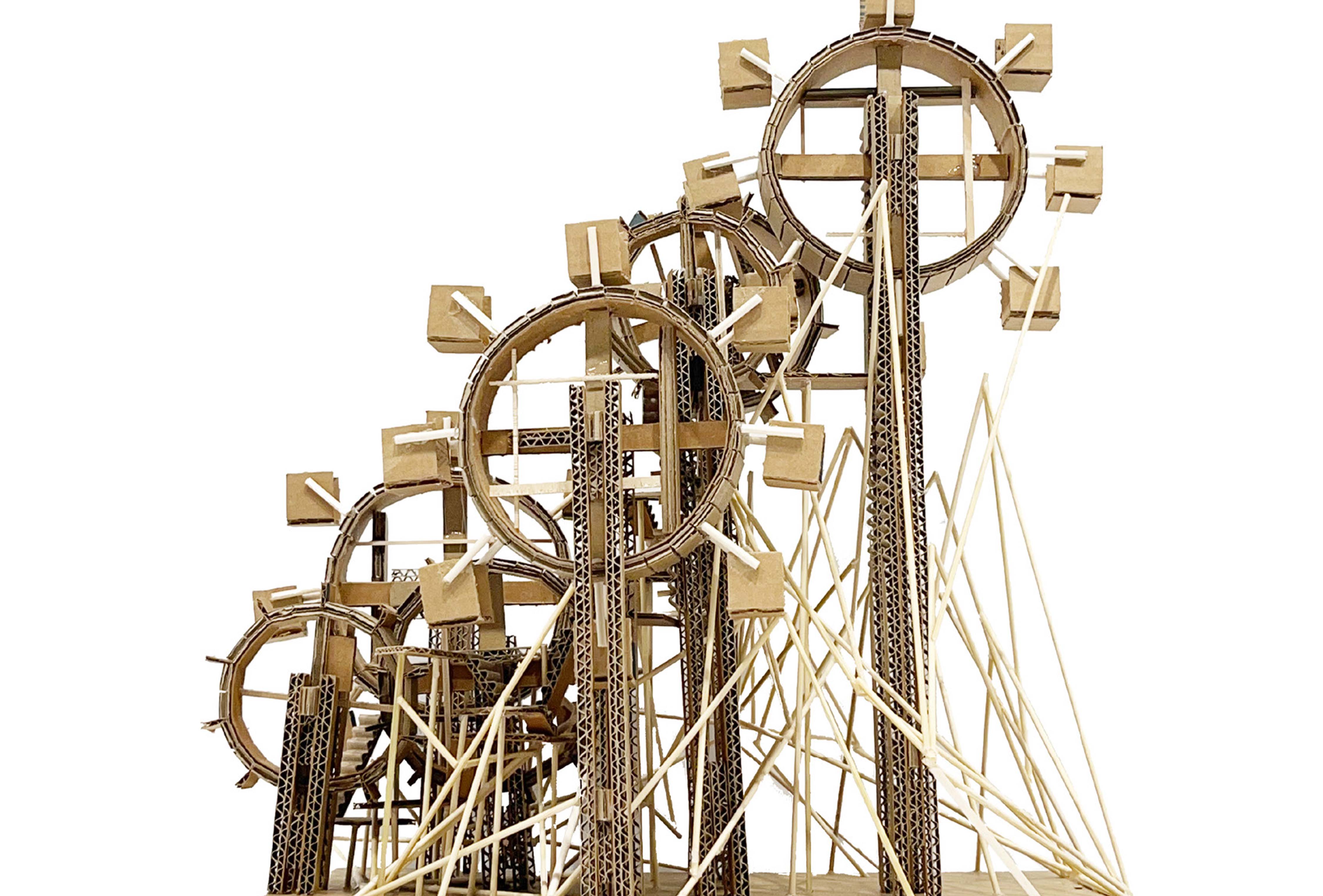
The Wipeout
By: Anuja Thurairajah and Kyle Wong
The Wipeout is a dangerous machine connecting the prestigious tops of Blueprint City to the endless slum of SteamPunk City. The contrast in themes between the two cities creates a rather intriguing juxtaposition in the arrangement of the gathering spaces. People can choose to go through the treacherous staircases, or perhaps they can take the rotating gears, hanging onto dear life. Overall, this creats a stimulating experience for individuals who dare to travel the distance.
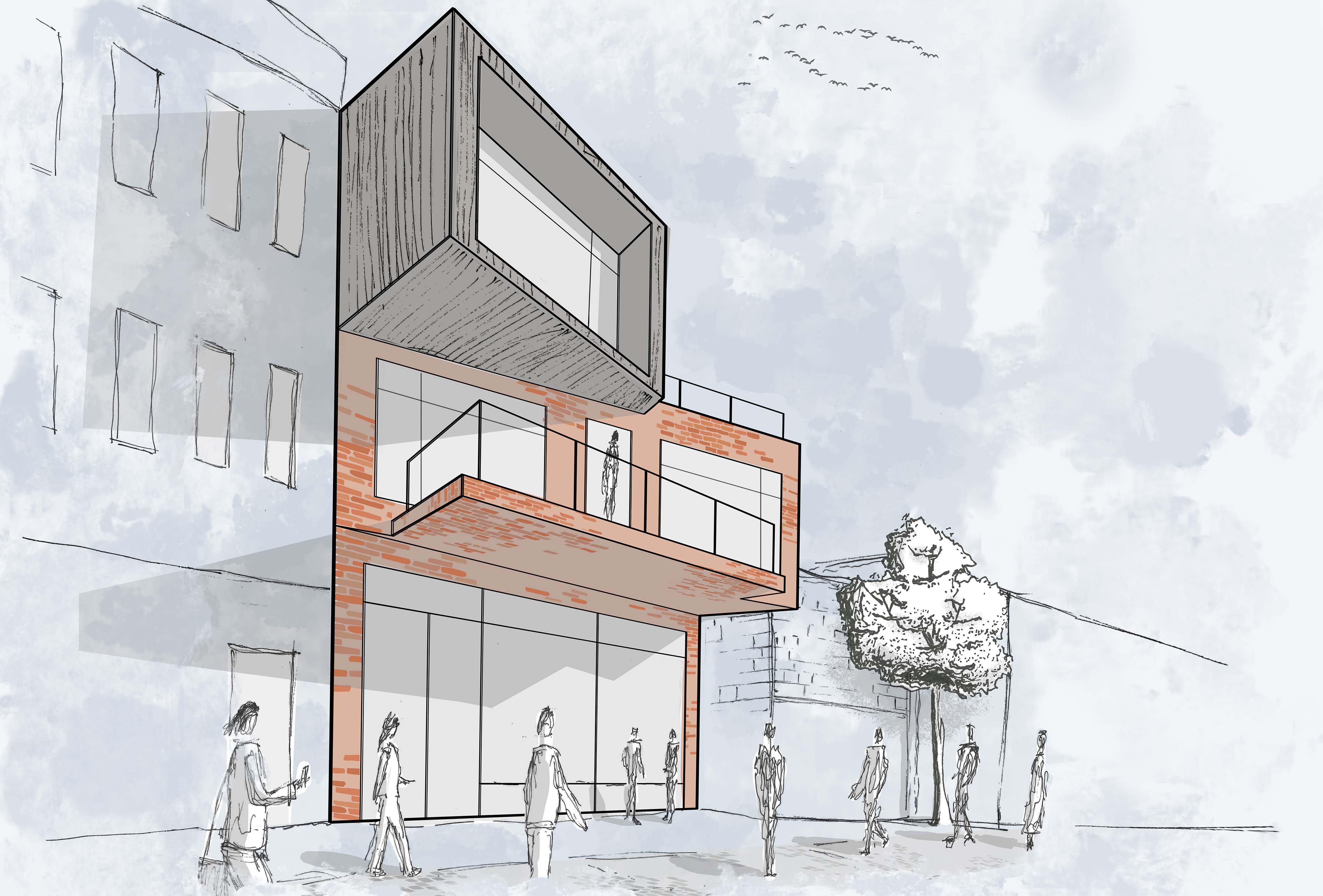
Mixed-Use Cafe/Residence: 615 Queen Street West
By: Marko Jovanovic
One of the main goals of this design is to animate the laneway at the back of the property. As of right now, Toronto laneways are being seriously underutilized, and this design is meant to kickstart a movement which would transform them into market streets bustling with life. While most buildings in the surrounding area neglect their rear facades, this design treats it as its most important face, which will one day front a lively pedestrian mall.
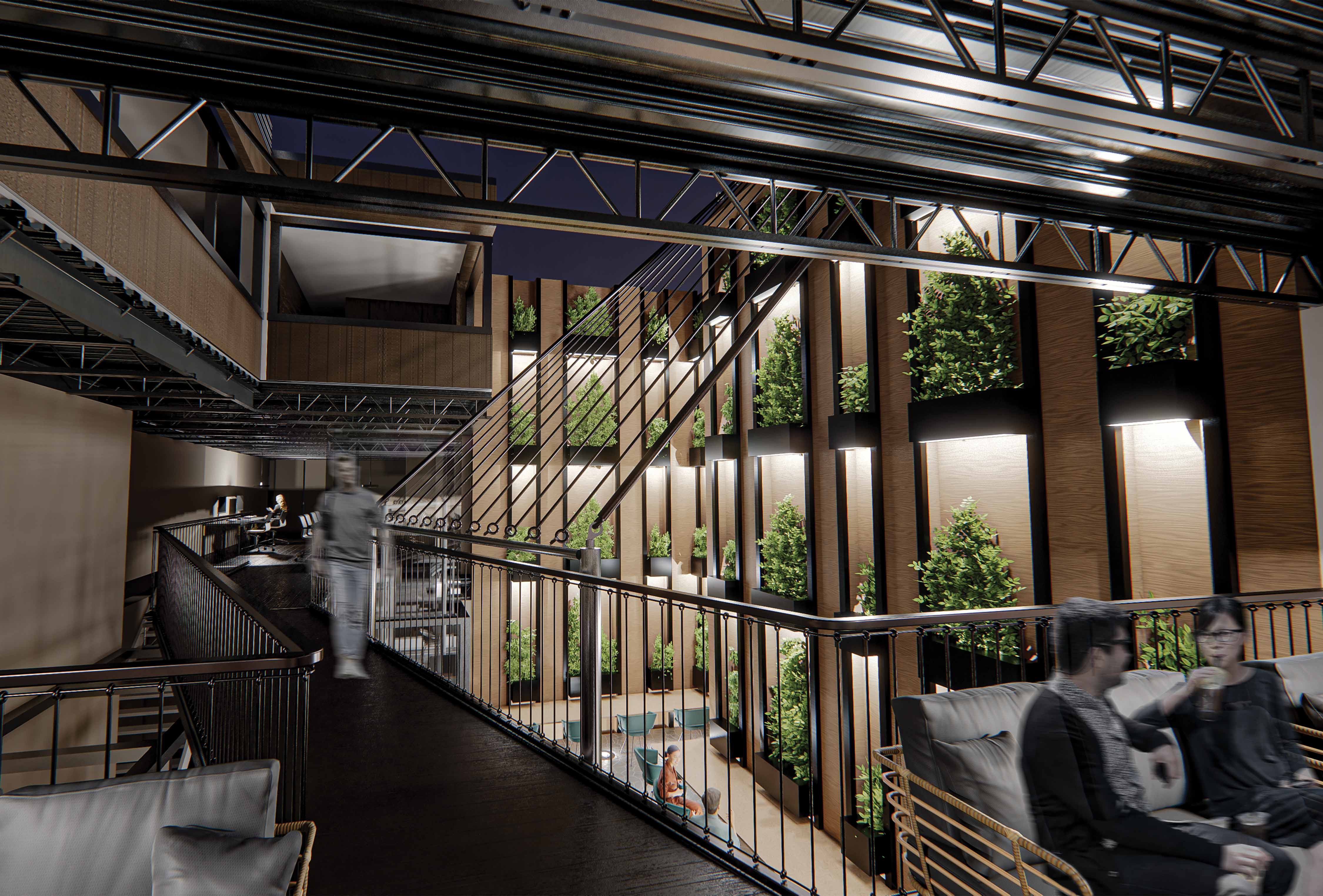
Mixed-Use Cafe/Residence: 307 King Street
By: Hannah Kim
Allowing the visitors of the cafe to grow a deeper connection with the surrounding environment of King Street, Toronto, a courtyard is designed to maintain the relationship between internal and external throughout all floors of the building. The second floor includes a bridge crossing through the courtyard, connecting one program to another for further flexibility. As this area lacks greenery, a green living wall surrounds the courtyard, also contrasting the industrial atmosphere of the interior.
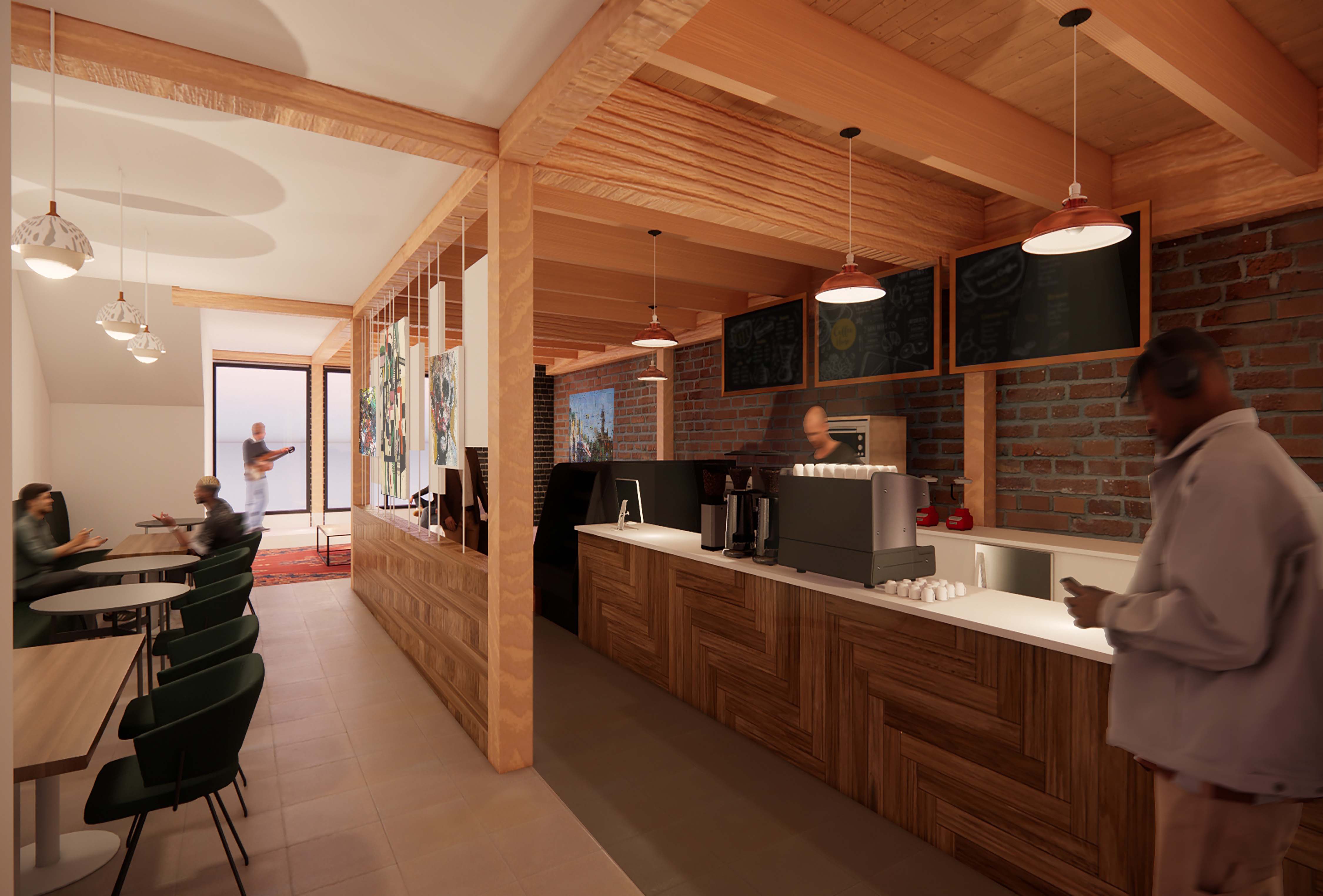
Mixed-Use Cafe/Residence
By: Massimo Montanari
The concept behind this cafe/residential building was to establish a contrasting atmosphere while incorporating the historical significance of the nearby locality. Through the exposed timber framing and brickwork from the adjacent building, the design accentuates the separation and creates different spaces within the cafe. This contrast contributes to a heightened sense of comfort for individuals as they enjoy their coffee. The residential floors situated above maintain the design concept, further emphasizing the juxtaposition between contrasting elements and contemporary aesthetics.
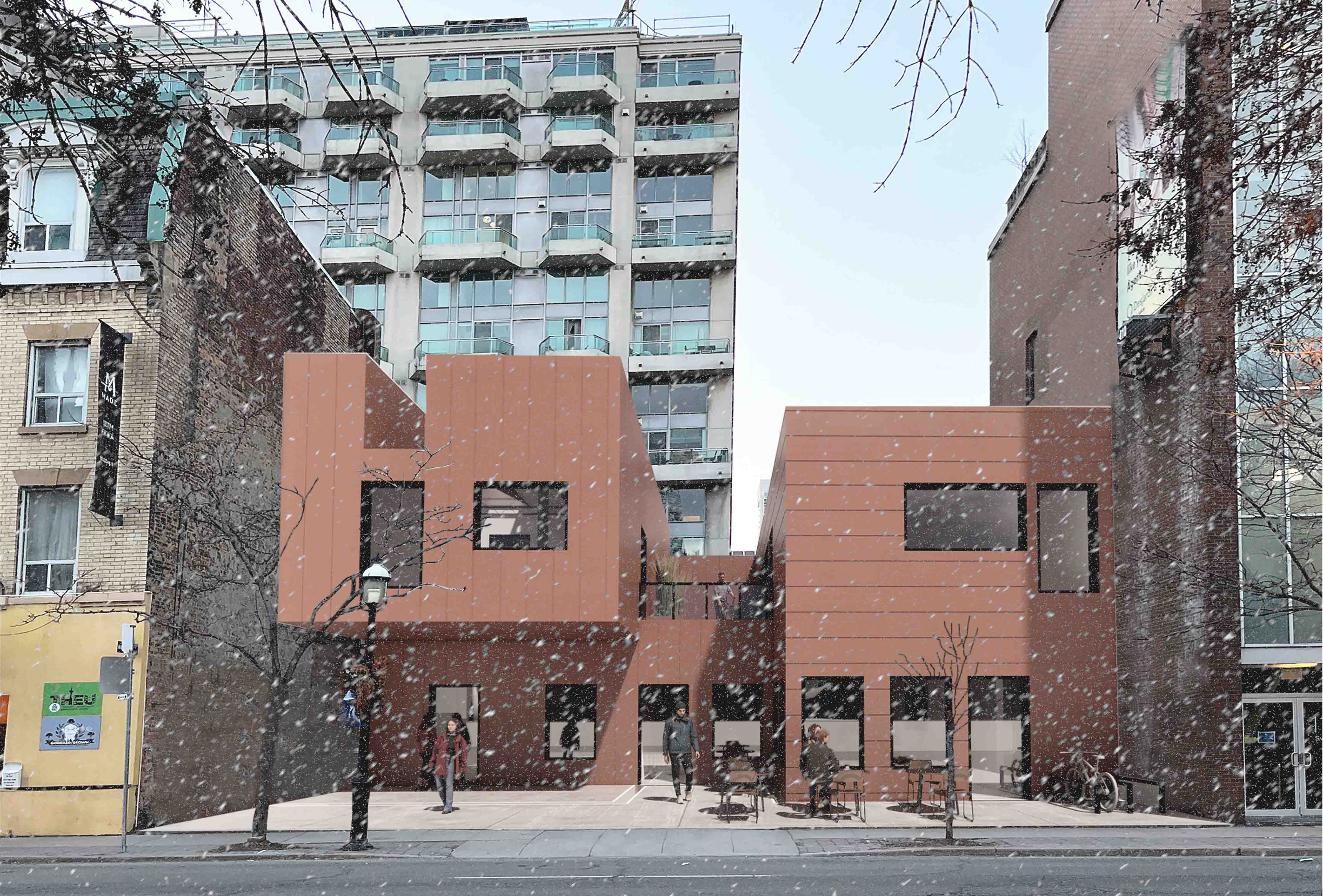
Mixed-Use Cafe/Residence/Gallery on Adelaide Street
By: Camila Ramirez-Vargas
The principal intention of this project is to connect the residence and cafe with an art gallery that provided a middle space between the two programs. The design explores the spatial relationship of the residential and commercial spaces with a courtyard and an outdoor area that allows pedestrians to connect with the site.
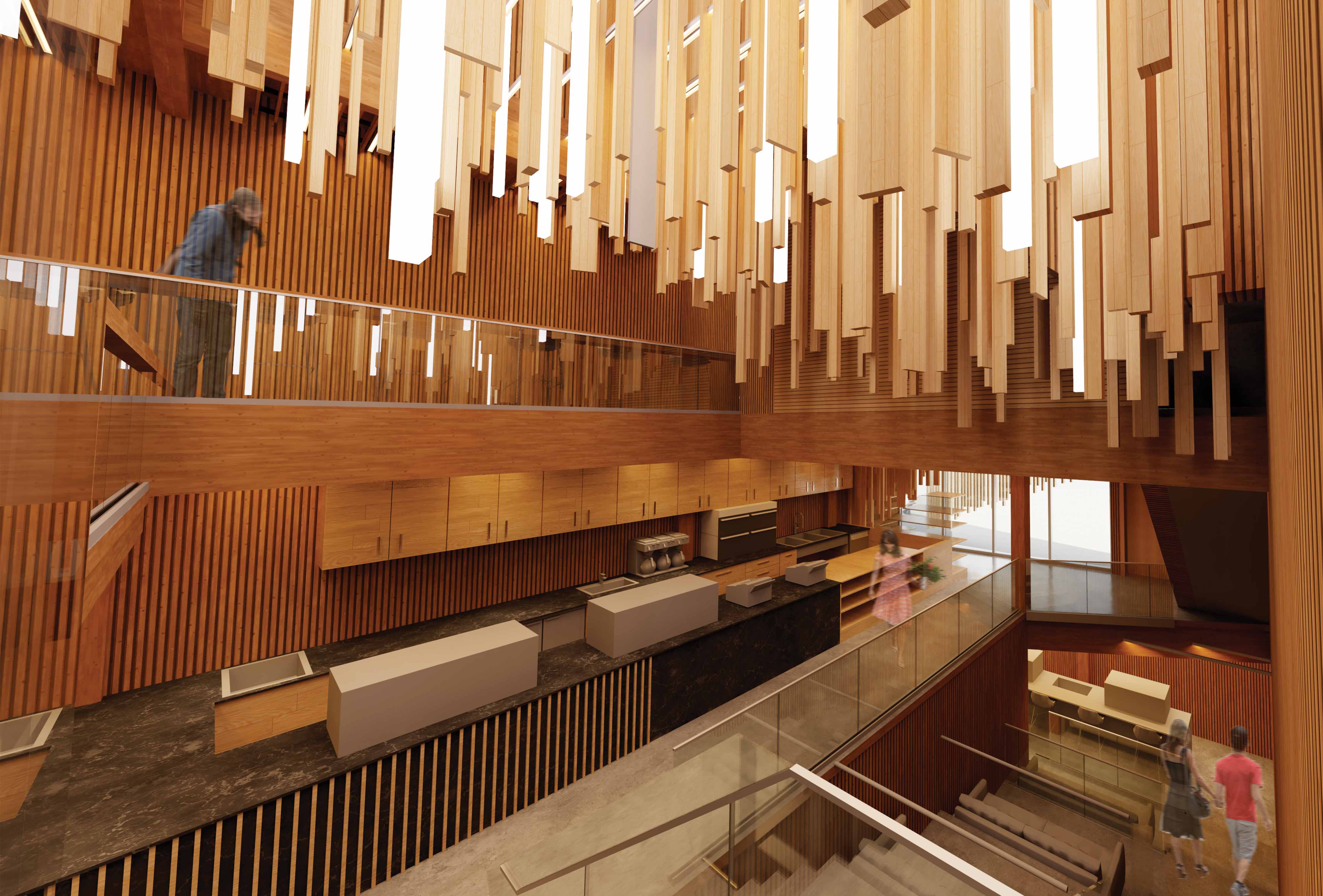
Mixed-Use Cafe: Vertical Axiality
By: Alexander Volyk
The architectural space has a dynamic mixed-use café program. It is designed to enhance connectivity and cohesion among three distinct floors. The design prioritizes vertical axiality, allowing for seamless integration and harmonious flow. This creates an atmosphere of unity and vitality, promoting an immersive experience for all who inhabit it.

Court Park Library
By: Peter Bormann
Toronto libraries have become increasingly important civic and community spaces in our city. This project explores the use of classical motifs, such as a barrel vault principal structure, to reflect monumental design at a local scale. Modern library functions on the lower levels support a great reading room and panoramic observation deck above, each connecting Courthouse Square to the neighbouring grounds of St. James Cathedral.
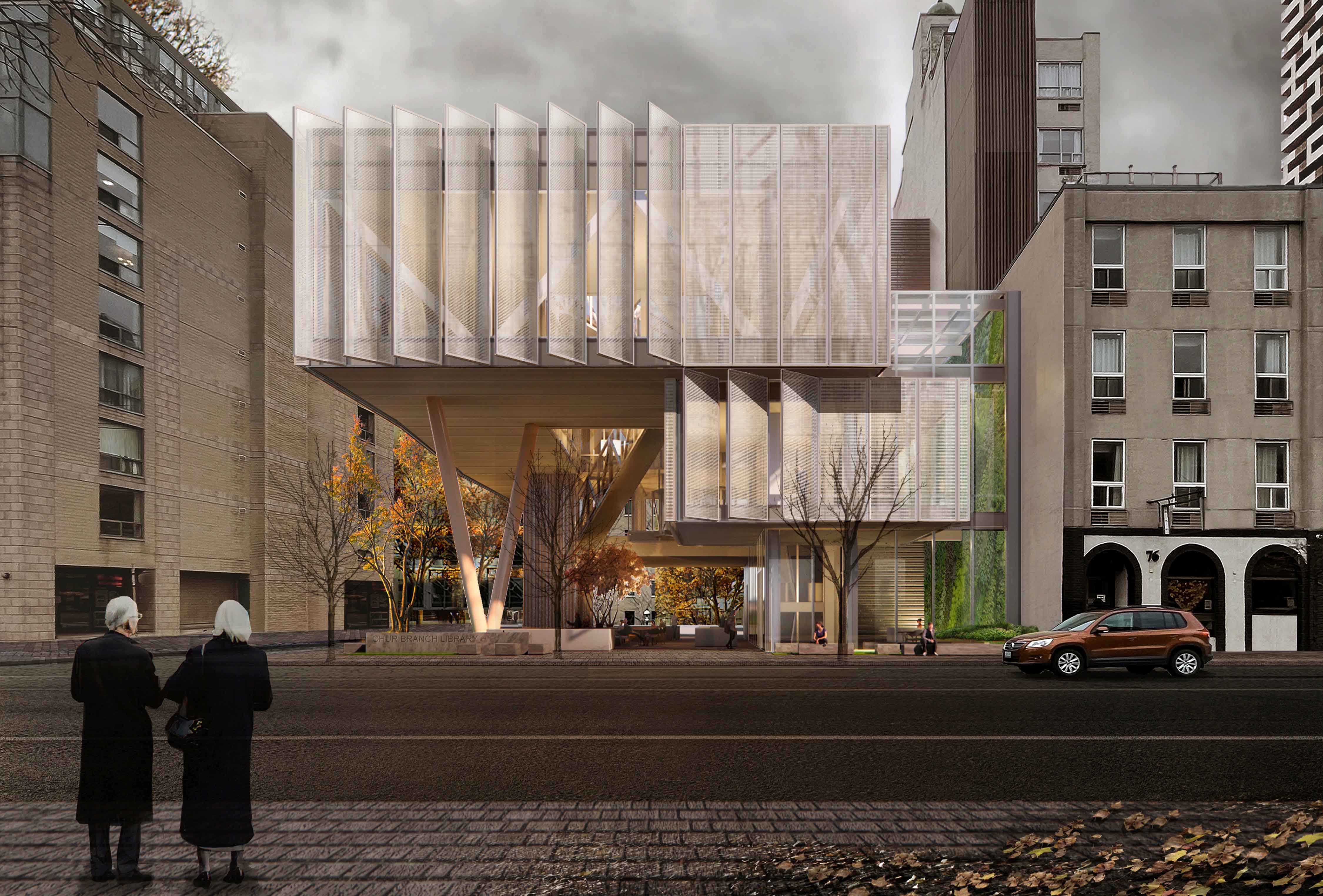
The Library Branch, 64 Church Street
By: Zhiwen Cai
People’s access to knowledge and information is not limited to physical books and the Internet. Interactive communication, activities or experiences are another way of acquiring knowledge and information. Therefore, the library of this project will create a public space that enables this function. Like the Agora in ancient Greece, it integrates public interest, customs, habits, civilization, and urban vitality with urban architecture. The ground floor of the library will be open to the public as part of the urban public space, which will not only help strengthen the connection between the park to the west and the church to the east but also make the library more versatile, allowing for a variety of events or urban markets in the plaza area, facilitating the participation of residents from different cultural backgrounds and thus better enhancing community cohesion.
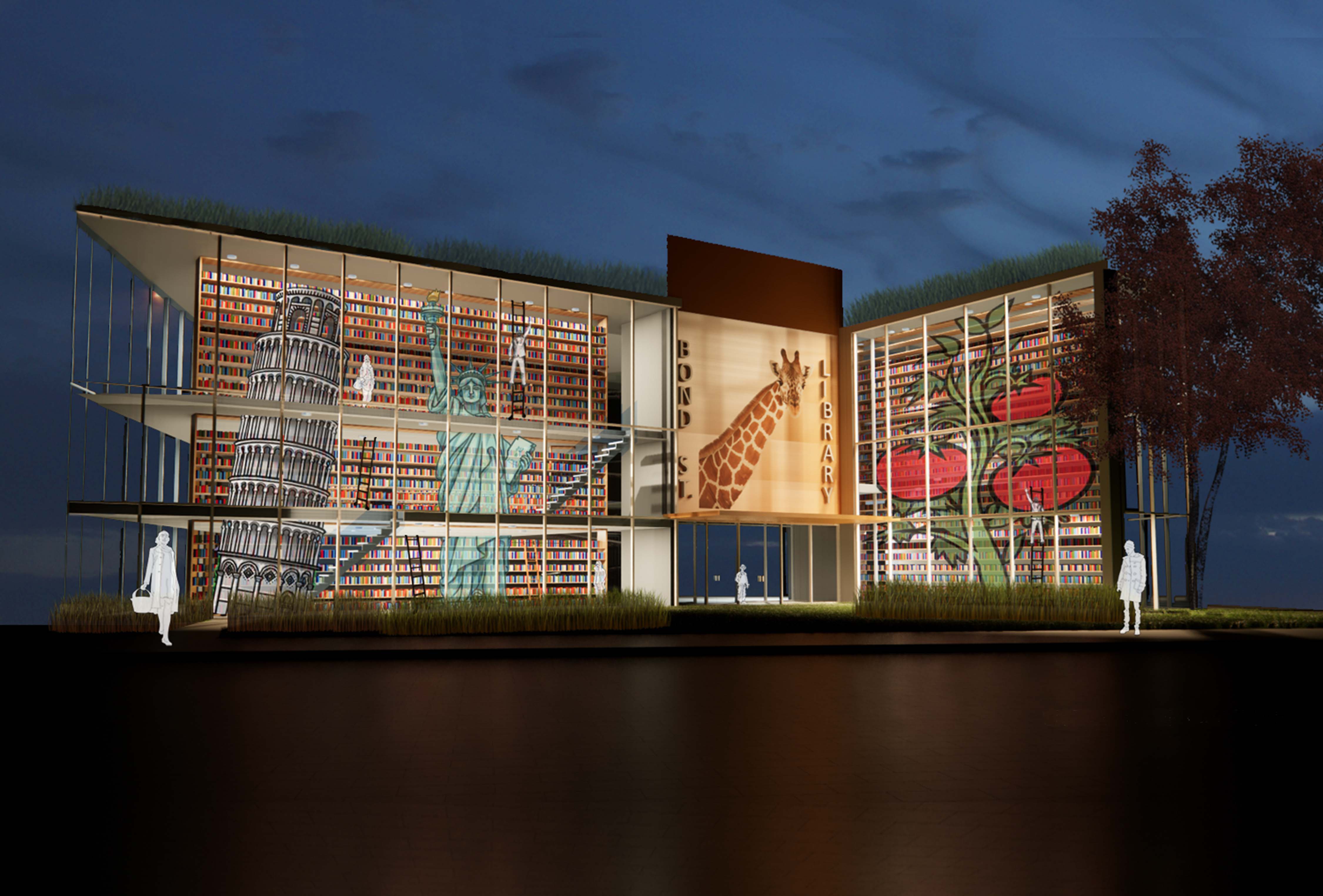
Bond Street Library
By: Aidan Chui
The building aims to inspire and invite the community back into the library to experience the spaces within. The main façade draws from the interior, displaying books and digital images from the books within. The library also features an atrium, urban farm, and interior and exterior spaces that provide for the community.
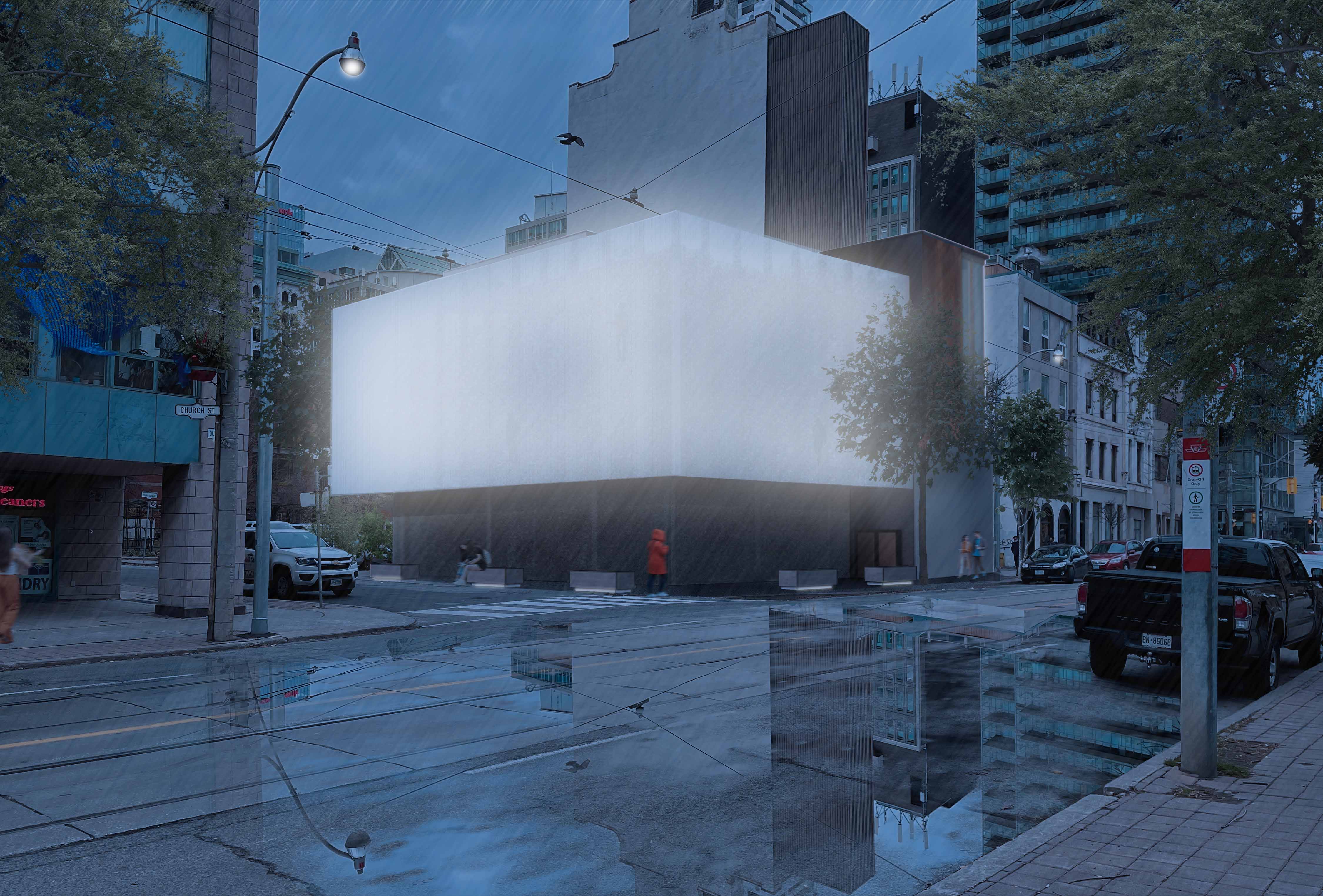
Lucid
By: Tony Le
The library's mission is to be a diversified location that attracts the increasing community around it. The library offers a space that encourages people to remain and be inspired by their surroundings. The outside world does not obstruct it and provides a bridge for people to connect with their surroundings by allowing them to see outside within the building.
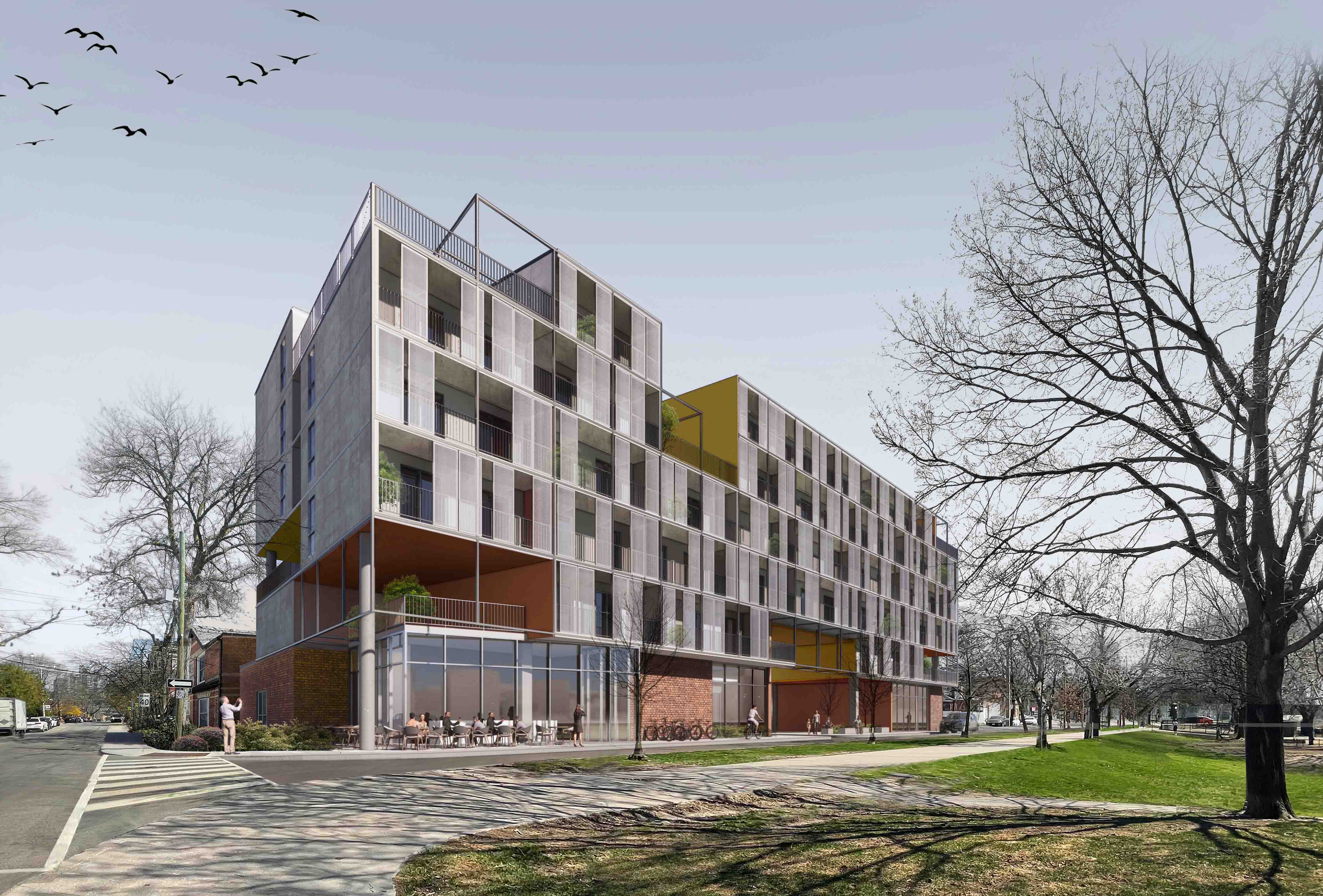
Missing Middle: Stanley Park Residence
By: Zhiwen Cai
The housing project is located next to Stanley Park, so the building will create a healthy and sustainable living environment where natural elements are incorporated into the public activity spaces and extend to all building floors. In addition, the rooftop can be used as an urban vegetable garden to encourage residents to participate, promote community interaction, and strengthen their connection to nature.
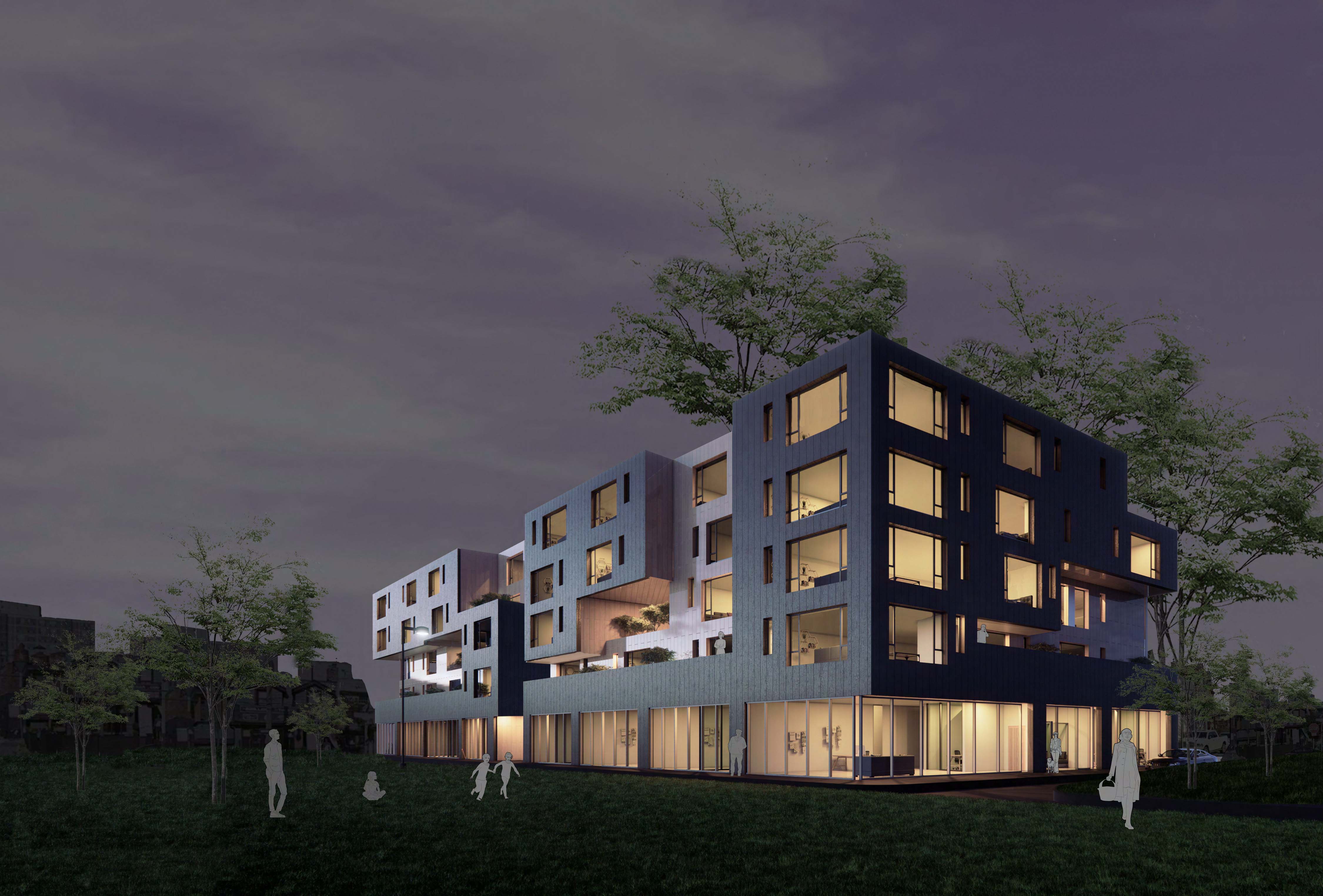
Stanley Park Complex
By: Aidan Chui
This residential complex provides diverse housing and retail options that serve the needs of the public. Communal courtyards, terraces, a café, gardens, live/work units, and other exterior spaces provide for and connect the community.
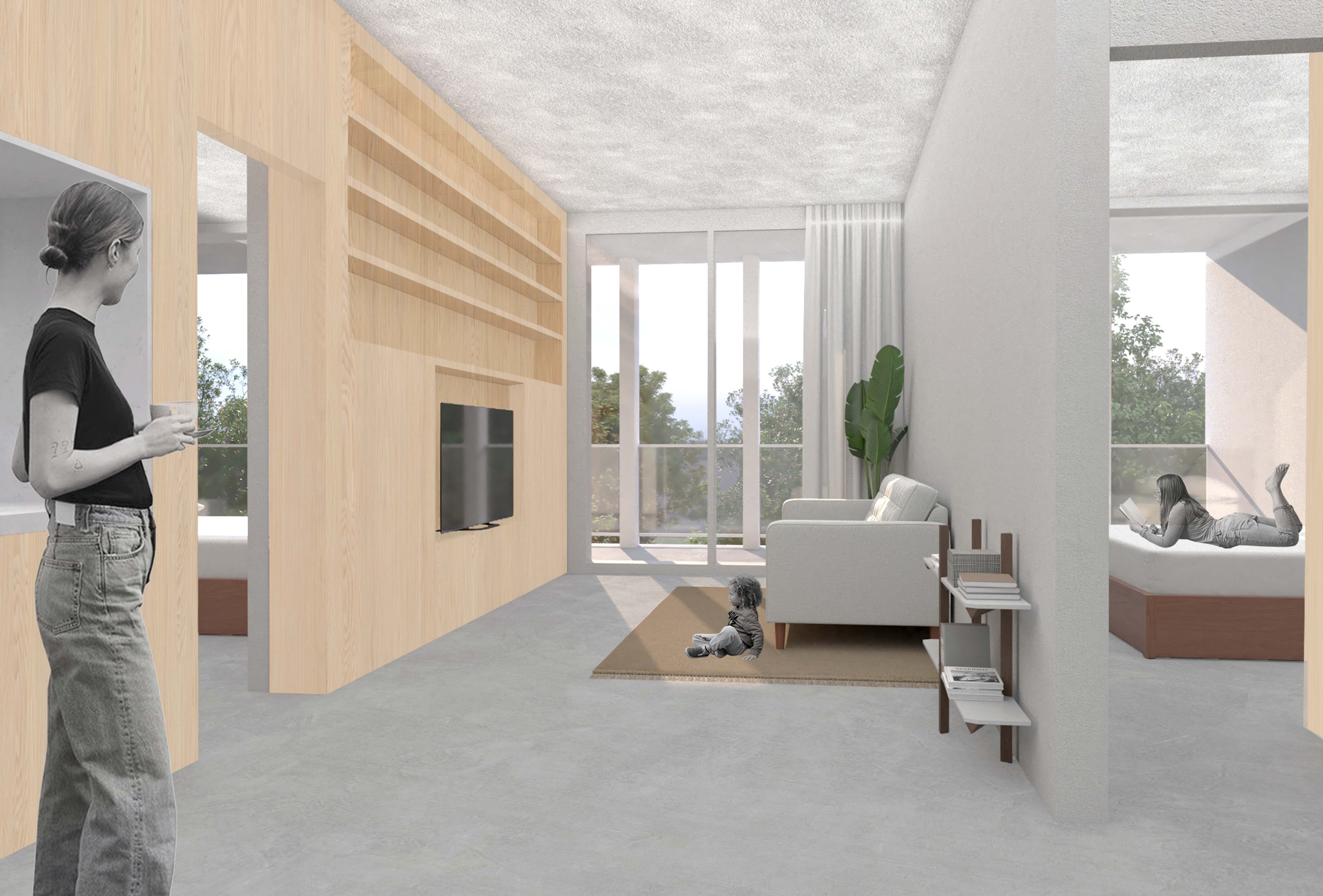
Stanley Park Residence
By: Dinara Gataullina
The Stanley Park Residence project in Toronto focuses on affordable rental housing, addressing the rising cost of living in the city. The project aims to increase density and shape the area's community with public spaces. The building program emphasizes spacious and functional unit layouts, with outdoor balconies offering scenic views. The project contributes to a vibrant social mix and meets the housing needs while carefully considering site-specific elements.
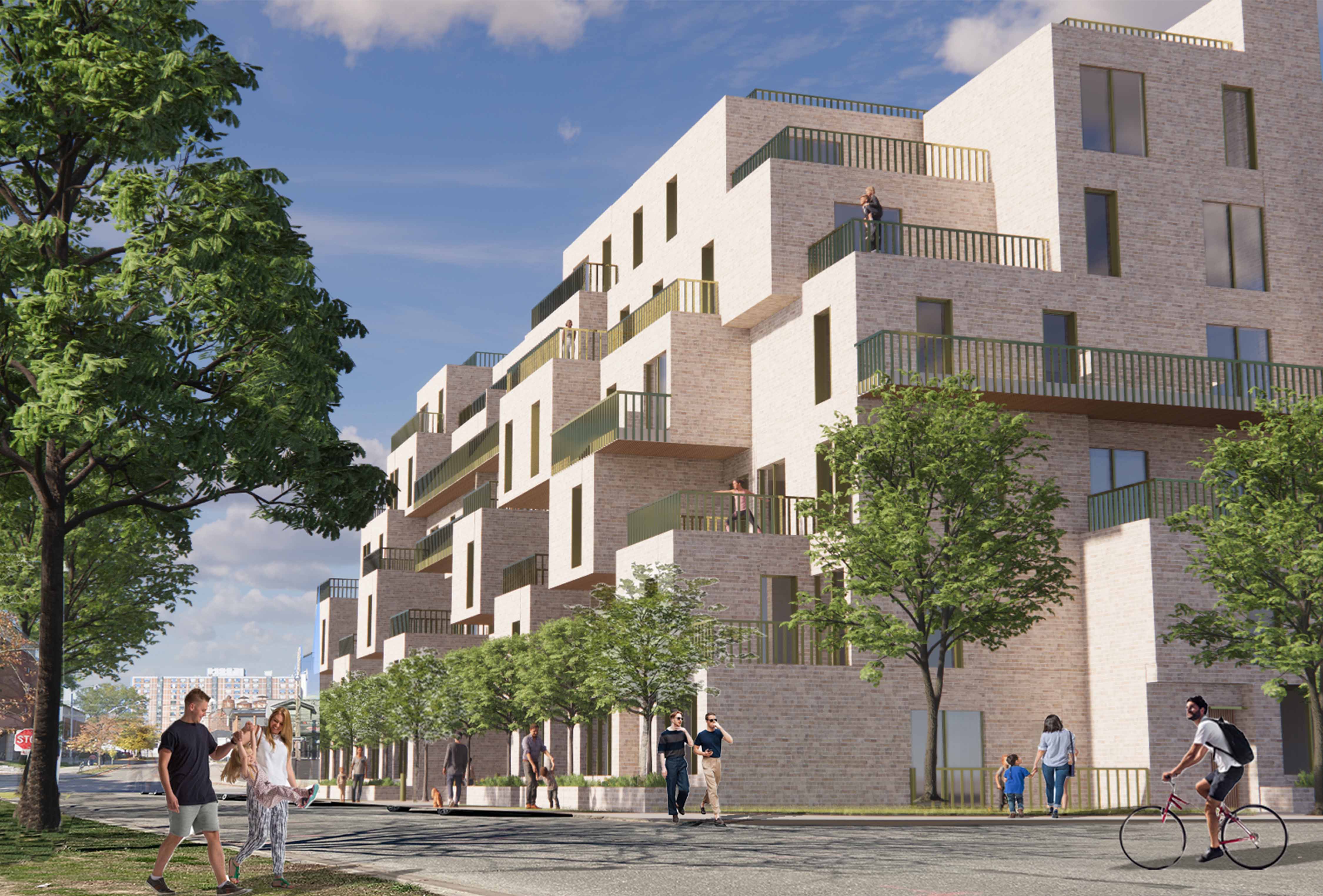
Streetscape
By: Brianna Vaga
Streetscape is a mid-rise housing development on Walnut Avenue across from Stanley Park, offering amenities such as a shared workspace, daycare facility, bike storage, community terrace, and a rooftop farm. The project seeks to create a community environment by taking the atmosphere of the existing neighborhood and reapplying it at a vertical scale, creating a neighborhood in the sky. Balconies face the park, becoming residents' backyards, and the widened corridors simulate streets. Planter boxes in the corridors create a buffer zone between public and private space and bay window seating fosters a porch-like environment for neighbors to engage.
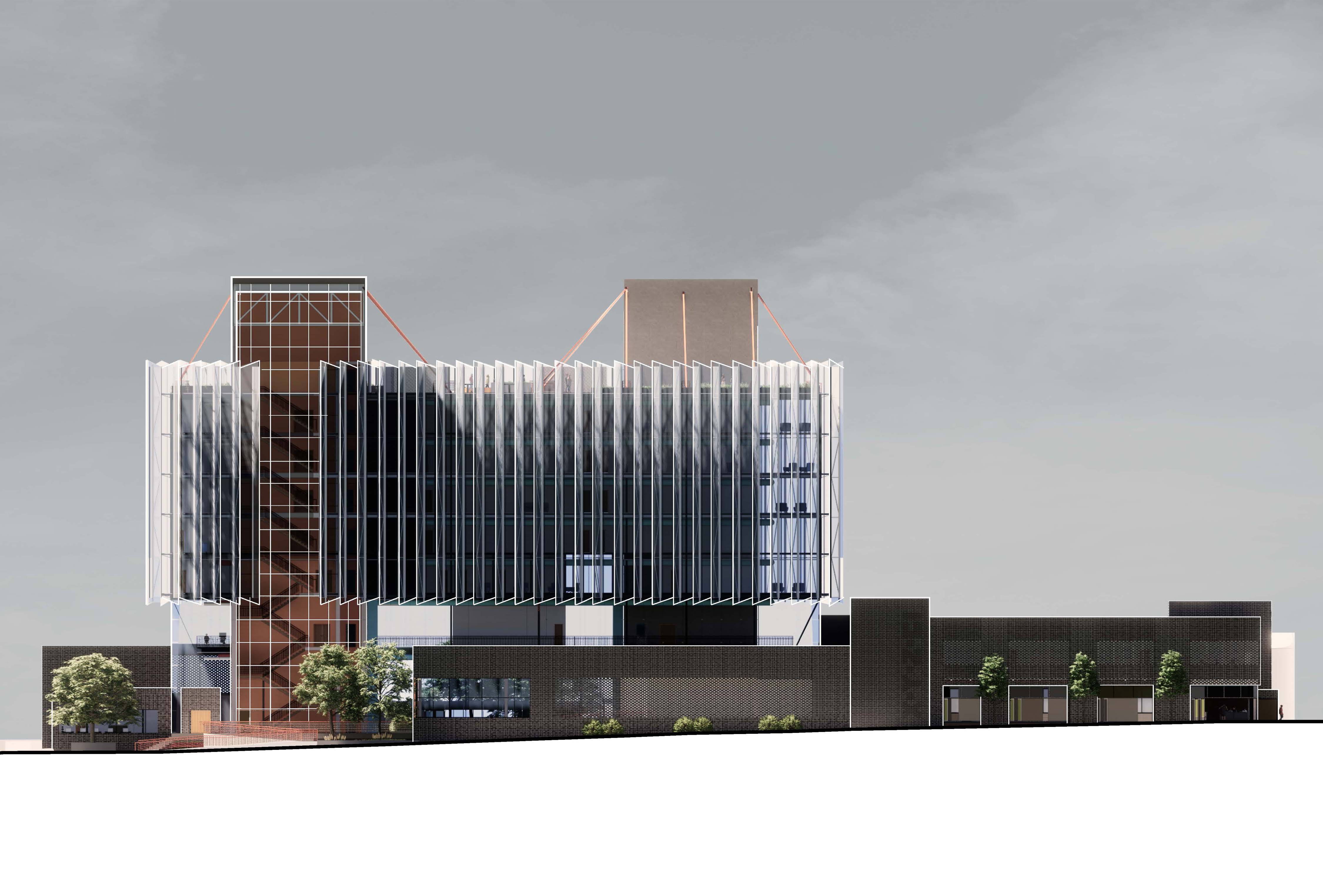
XYZ.CI City School
By: Heba Al-Fayaz and Paige Hitchins
XYZ.CI City School proposes the spatial and tectonic intersection of innovation, human-scale, and community. At grade, an urban fabric-related base houses amenities with a central student commons. The commons is defined by the SLICE of the tower’s glass envelope along its perimeter, revealing the activities in adjacent spaces to the commons. Enveloped in playful brick that opens and closes to the community, the grounded base contrasts the light academic tower HUNG above the student commons - celebrating old and new.
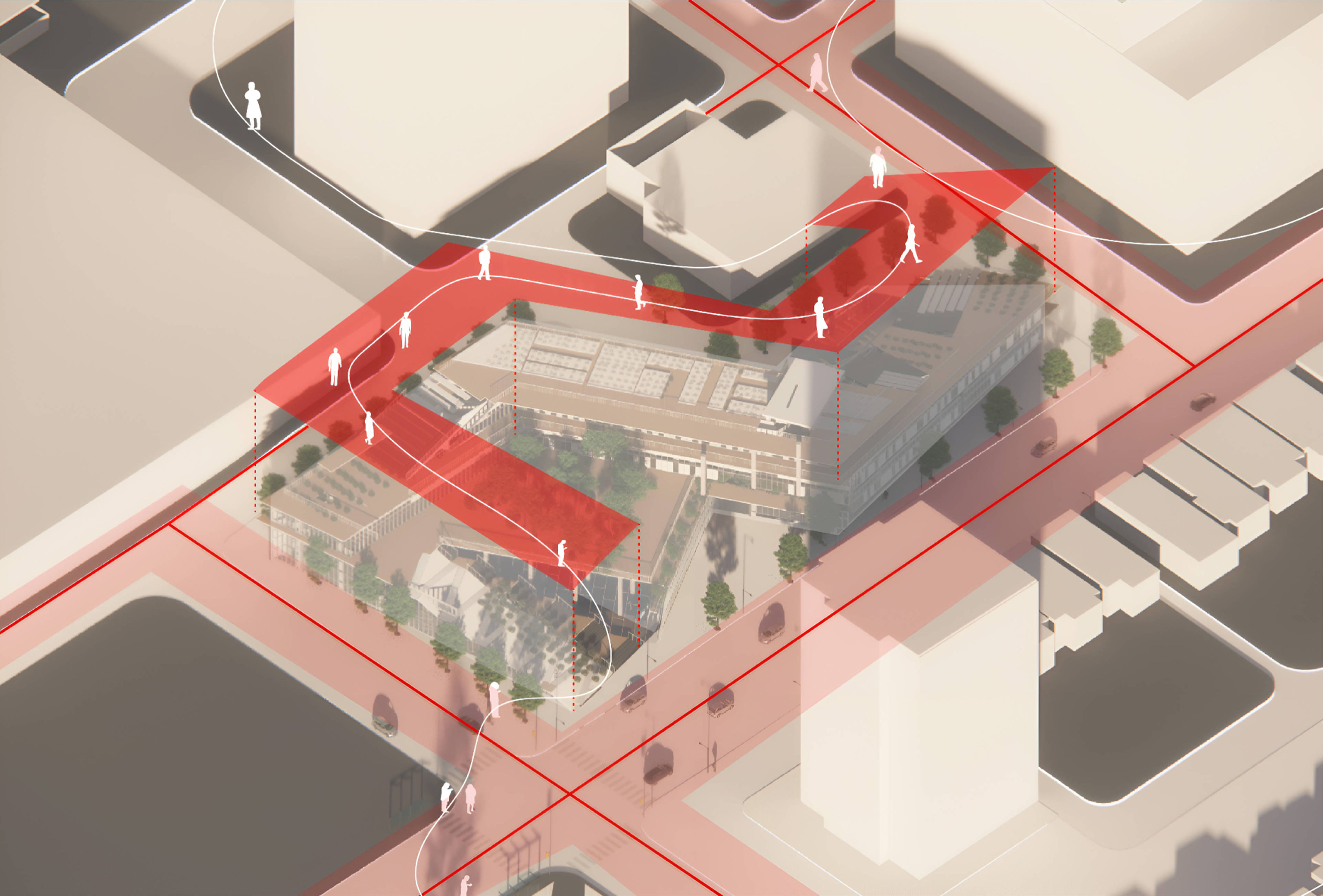
City as School, School as City
By: Uyen Bui and Sana Ahmed
The project defines change as a collection of differences fostered by transition and circulation in urban cities. Implementation of planar movement generates learning spaces unique by their relationship to the site and the program. Thus, the school is defined not by walls but rather planes. The project generates spaces that respond not only to the textbook and problem-based learning but rather exposure to learning through activity, communication, opportunity and observation.
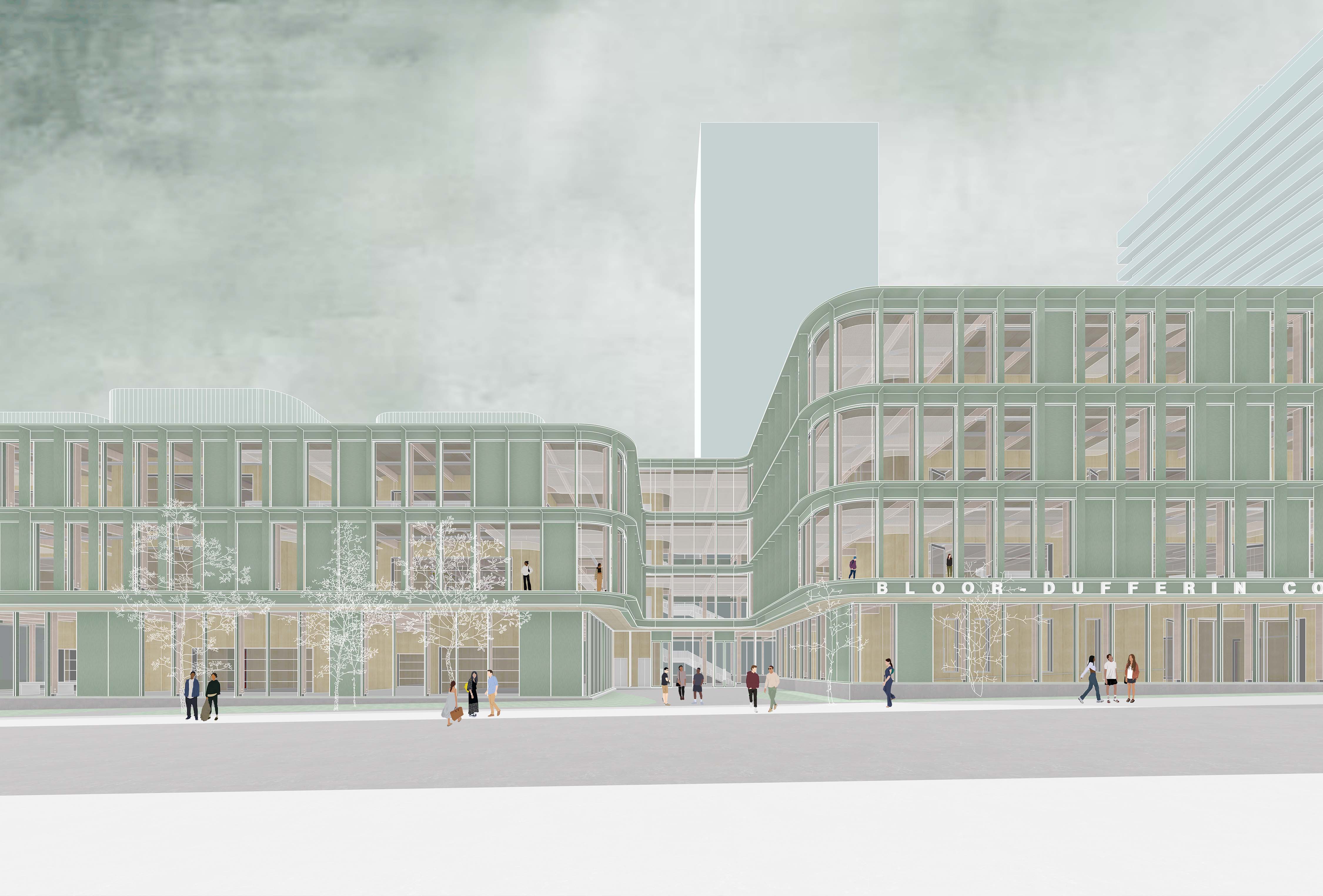
Bloor-Dufferin Collegiate
By: Todd Collis and Yuan Lei Embellado
Bloor-Dufferin Collegiate challenges conventional secondary school pedagogy. The traditional academic hierarchy is broken and a balance between student and teacher becomes more conducive to comfortable learning experiences. Engaging multiple, yet similar disciplines within the school begins to define this new pedagogy. Expansive classrooms, boundless corridors and a new approach to what a classroom can be results in a diverse academic institution that leaves its stakeholders in charge of how the learning is produced.

Bloordale Alternative Secondary School
By: Luke De Bartolo and Jana Stojanovska
The New City Alternative High School in Dufferin Grove uses "City as School, School as City" to engage students, staff, and community. The building's atrium becomes the heart of the school and neighbourhood, delivering themes of warmth and biophilia through its structure and materiality. Within adjacent learning spaces, custom wood features denote areas for student engagement and interaction, facilitating a more collaborative pedagogical approach. A communal urban farm further addresses social and environmental issues, merging alternative and traditional programs.
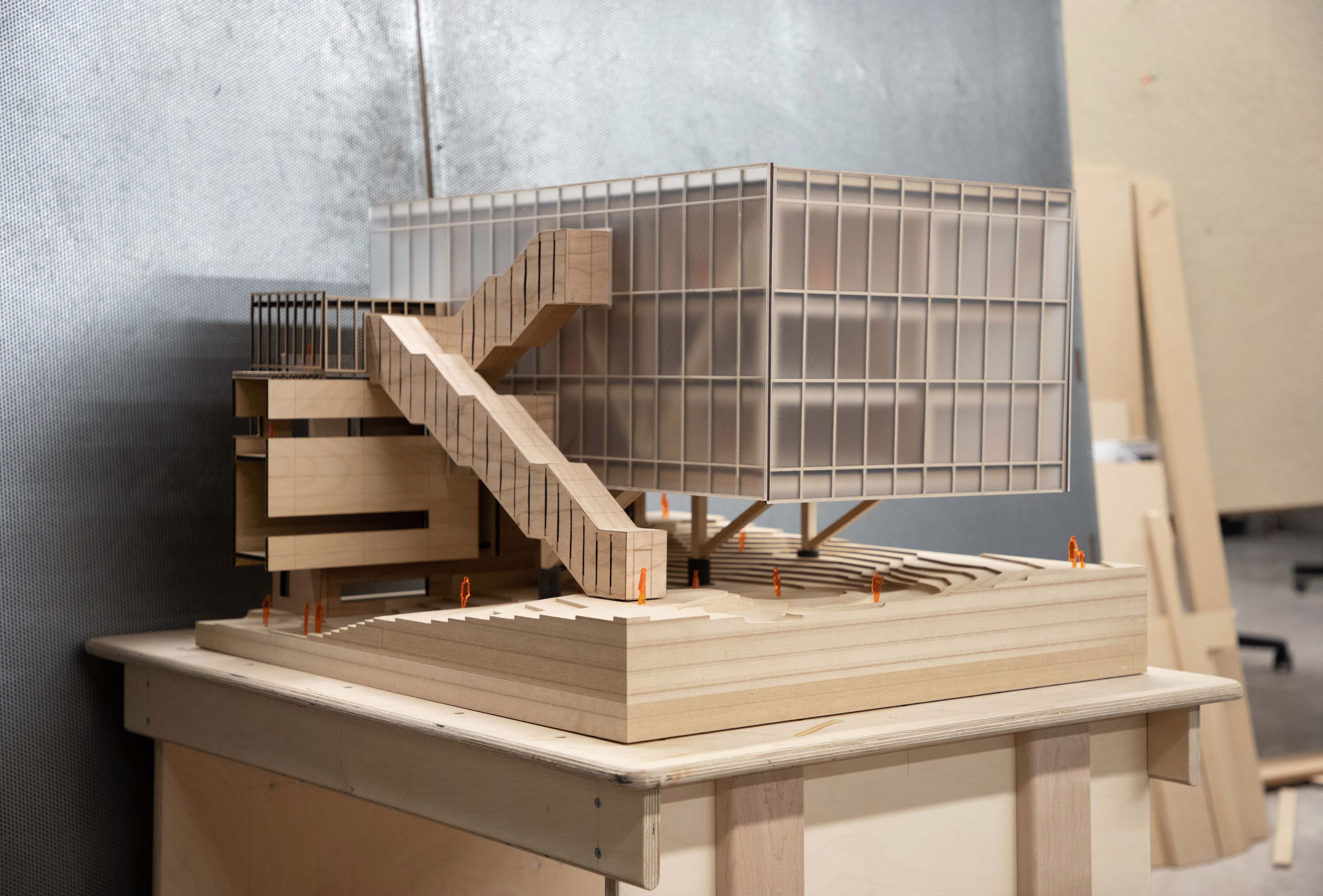
Bloordale Collegiate Institute
By: Thomas Hristov and Jake Kroft
Our alternative high school design aims to enhance the social context in the neighbourhood by creating unique spaces for students and visitors alike. With the use of topography and the expansion of the surrounding park network, there is an opportunity to amplify student experiences and offer new learning opportunities for the community. The proposal aims to enrich the dense urban fabric of Toronto by increasing pedestrian comfort and interaction in the public realm. See more here (external link) .
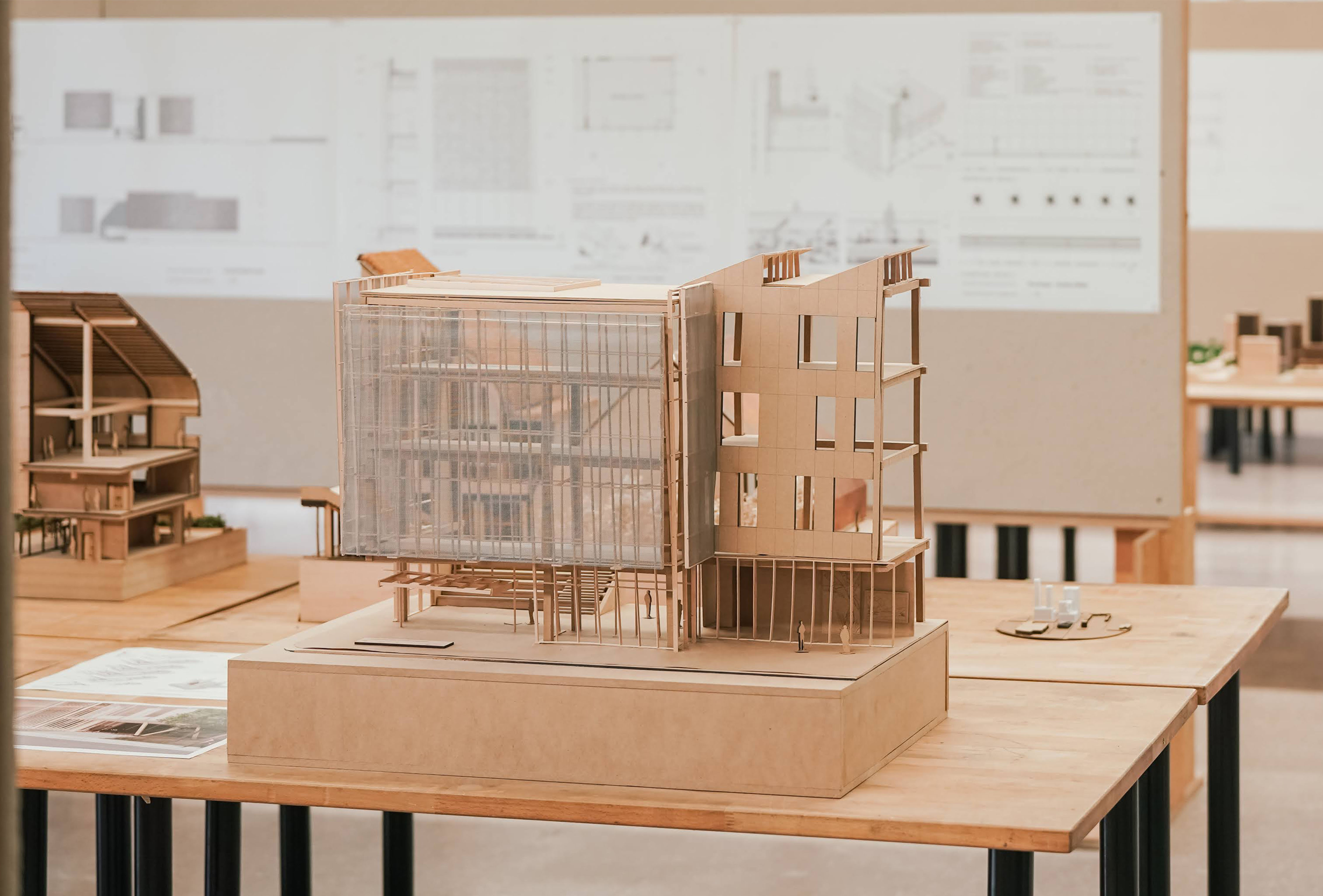
Bloor Dufferin Collegiate
By: Katy Cao and Charissa Medrano
Bloor Dufferin Collegiate is a high school that explores the concept of the “school as city” and “city as school” in which local influences from the Dufferin Grove neighbourhood influence the culture and design of the project. The intention is to actively engage the school and public community through: the play of light, the dialogue between the private and public spaces within a school and providing students with agency in their education to attest ownership over different learning environments.
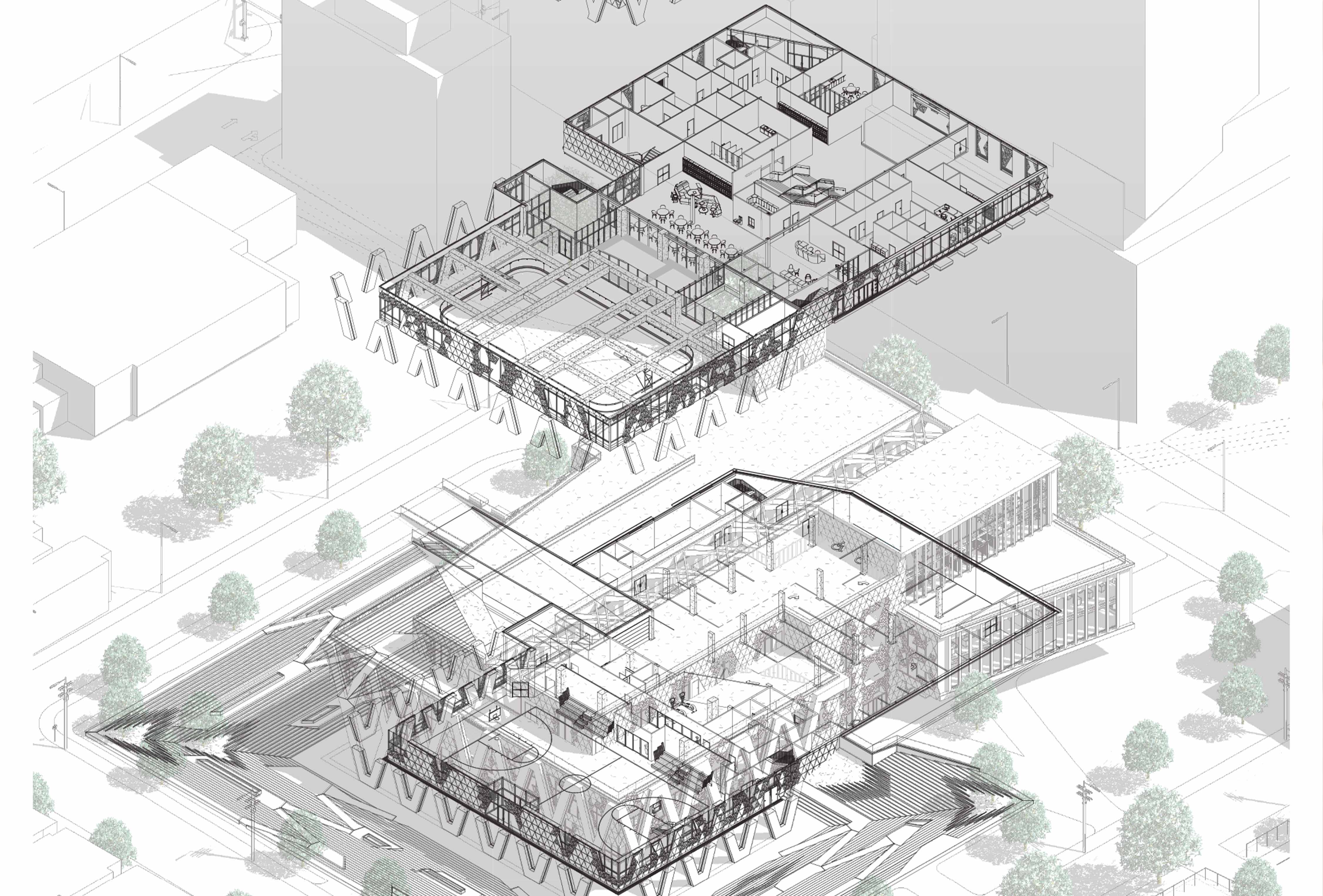
Living Machine Collegiate Institute
By: Muhammad Ghaffar and Cesar Rodriguez Perfetti
The concept evolves from the three pillars of sustainability:
Economic Sustainability: Utilize cost-effective materials and construction techniques, while energy-efficient systems as living machines that clean the pool water while being operated by students.
Environmental Sustainability: Continuous openings maximizes natural light, while the green roof insulates, thus reducing heat absorption and managing grey water collection.
Social Sustainability: Spaces promoting learning, collaboration, community, encouraging physical activity (e.g. the gymnasium, running track, natatorium) for students and community. The green roof also serves as regenerative urban farming.
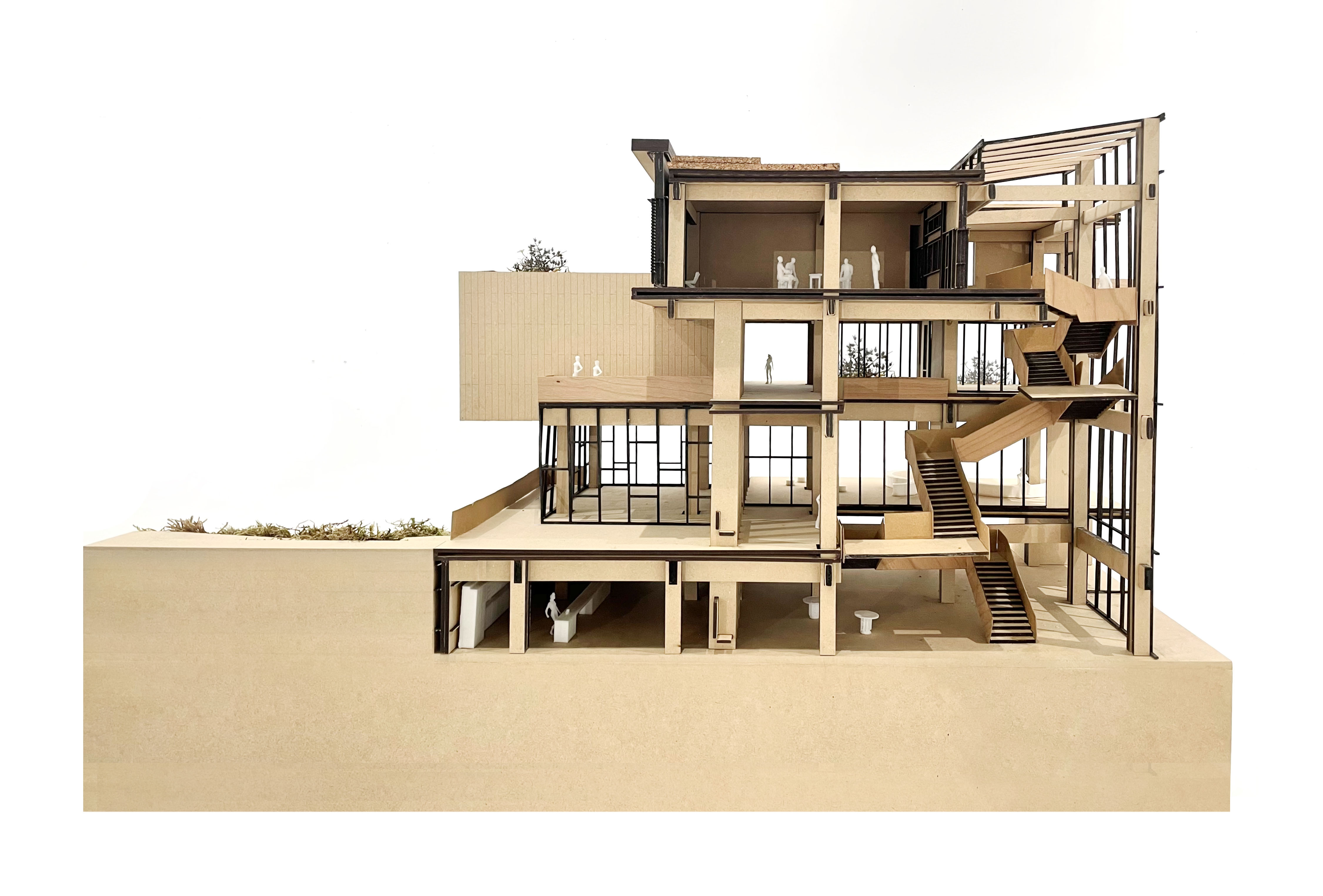
Dufferin Grove Alternative School
By: Haoning Zhao and Jennifer Jia Yi Zhu
Dufferin Grove Alternative High School is designed to promote community engagement with a community kitchen, exhibition hall and garden. Above the ground floor, the teaching volumes are stacked like building blocks around the courtyard. When moving through the school, the interplay of solid and void between buildings and gardens will create ever-changing pathways, light conditions and scenarios. Therefore, students will get closer to wind and rain, plants and seeds, and nature will become an extracurricular textbook that inspires their curiosity and imagination.
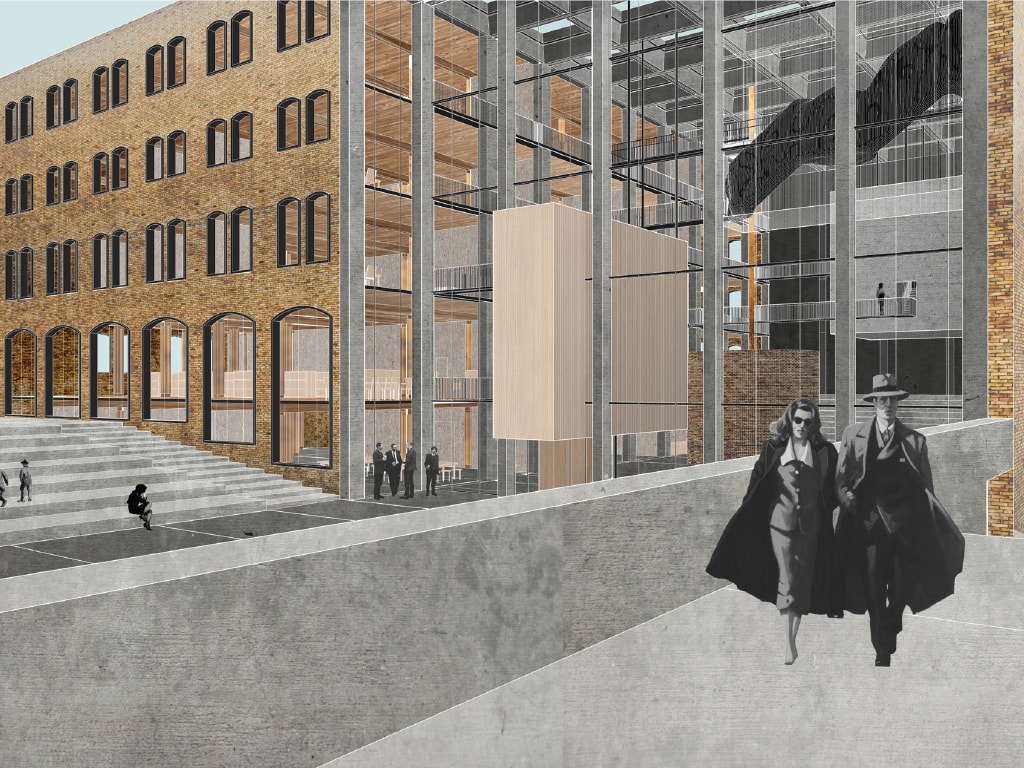
Future School
By: Ruslan Ivanytskyy
Architects’ value will be found in doing something a computational mind cannot accomplish—creating meaningful spaces that create intangible experiential moments for the masses. The new proposal for the Saskatoon School of Architecture is focused around reminding students of their senses by channelling them as they circulate through the building.
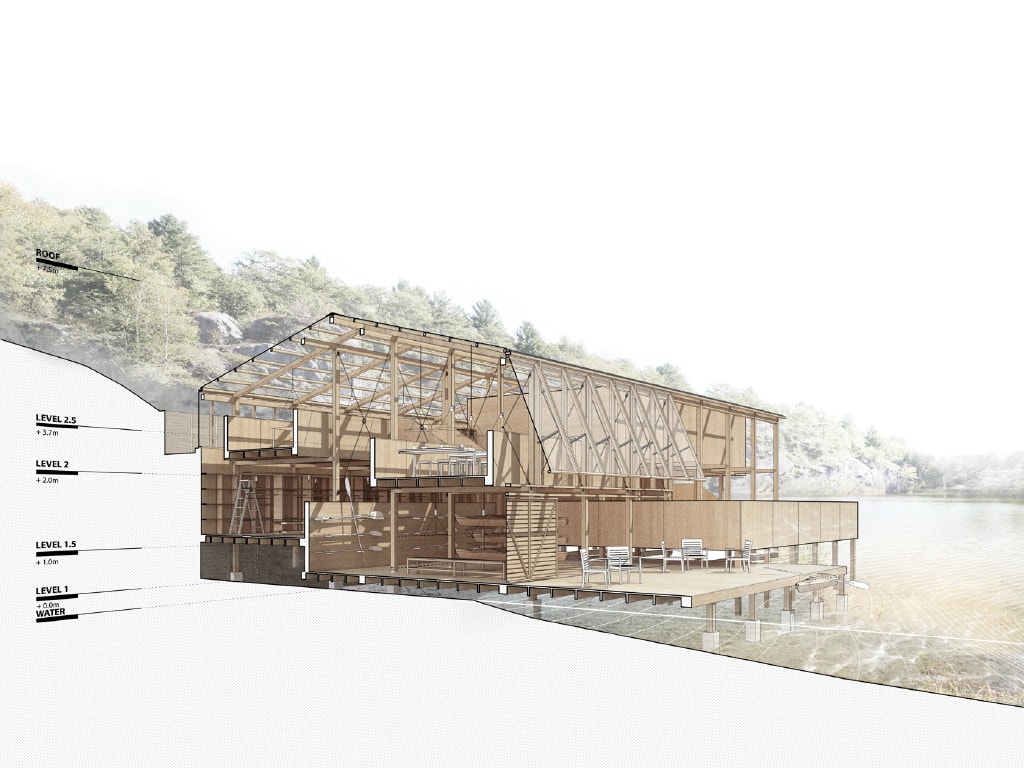
Divide and Connect
By: Timothy Lai
This design seeks to enhance and reflect the loose nature of play within the context of water. The changes in level and elevation emphasize the sloped nature of the site and allow for different levels of engagement with the lake. Wood is used for experiential and structural purposes.
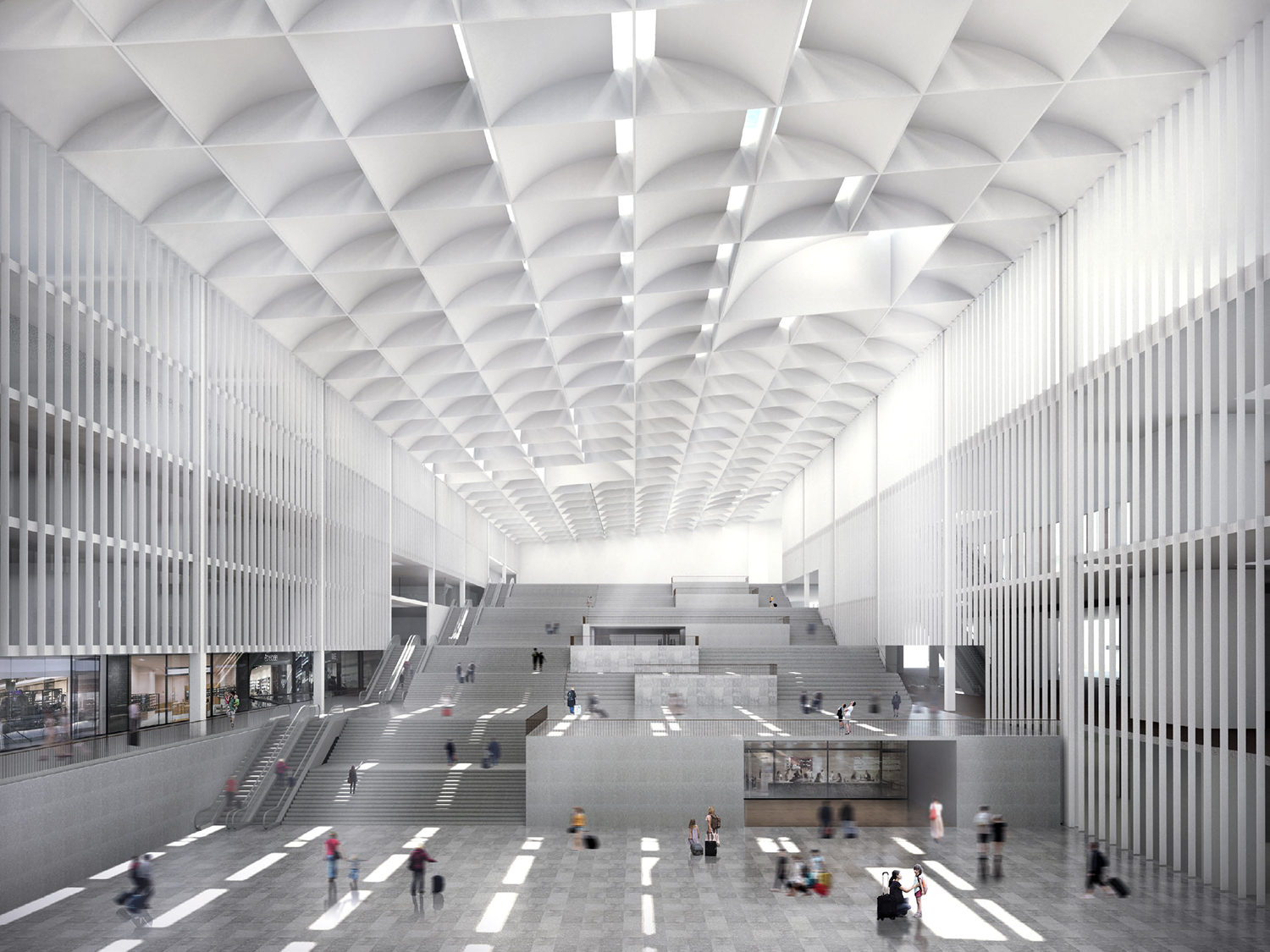
Pearson Transit Hub
By: Meng Ye
This design aims to emphasize the quality of transport hubs as places that affect our perception of the passage of time. The building is divided into two zones: the south zone houses the different modes of transit, while the north zone houses the commercial and amenity spaces. Transitioning between the two zones is a central space that merges all circulation. It is a place of pause, orientation, gathering, and encounter.
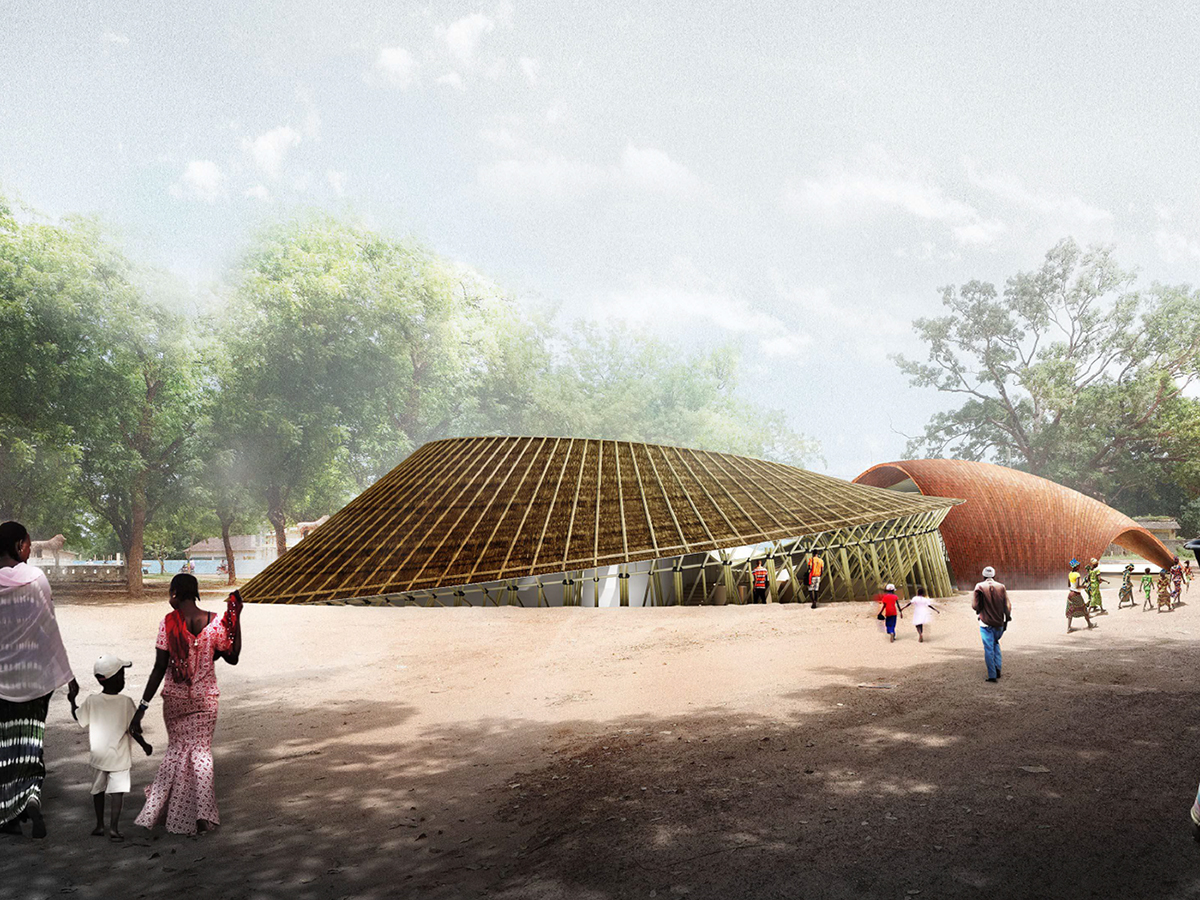
Terra
By: Christopher Pin
Cultural preservation is contingent upon the atmosphere in which it is experienced. The sensation of the atmosphere has the power to subconsciously link experiential memory with ritual learning. The structure both sinks into the earth, and rises from the earth, becoming modern while returning to the earthen source of African architecture.
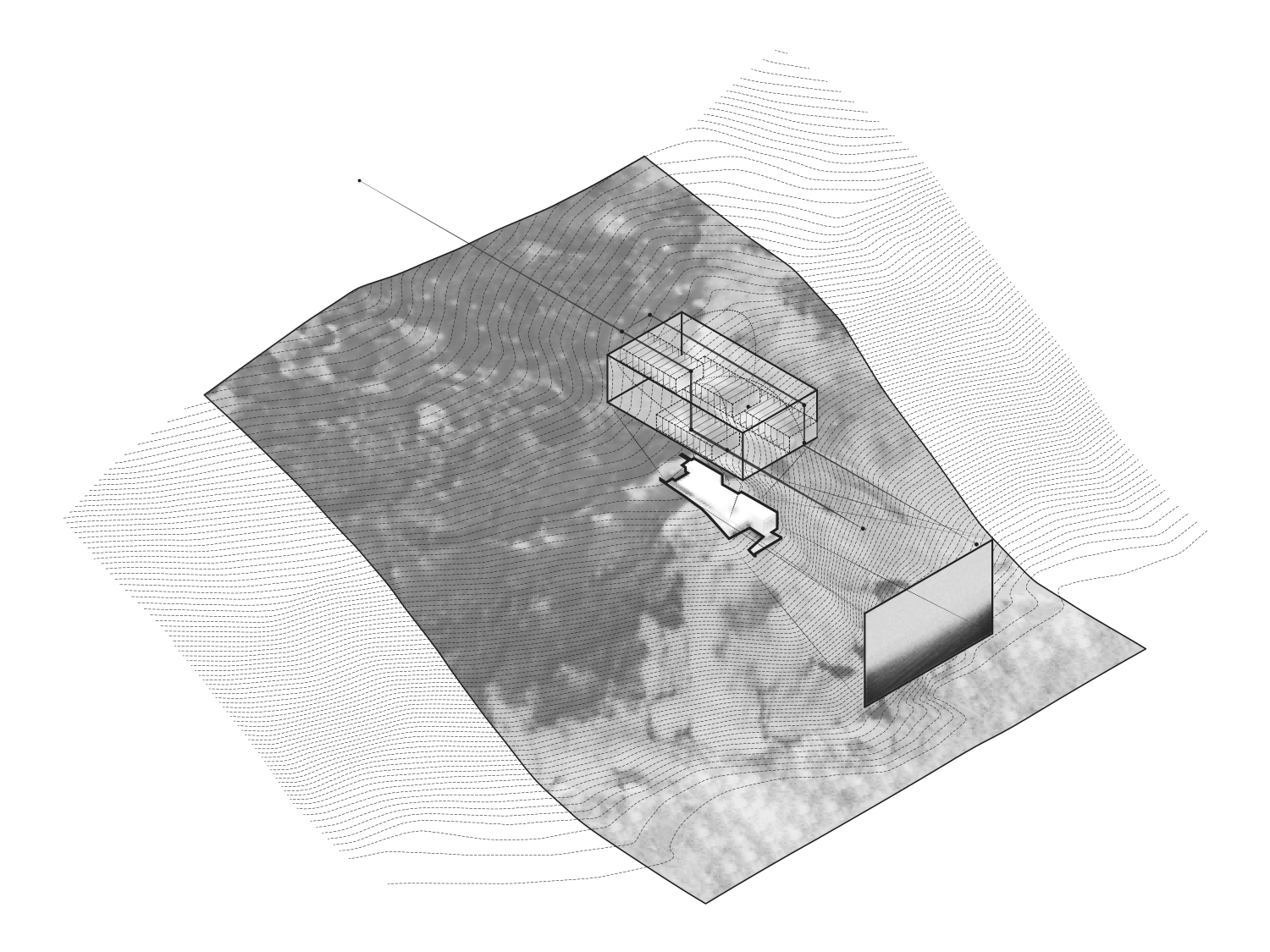
Cinematography Studio
By: Johnathan Chan
This structure spatially reinterprets an unfolding narrative as a congregation of moments to be rewound and replayed in a multiplicity of sequences. The cinematographic concept of sequence is explored in the construction of architecture from the complexity of the formal expression to the unfolding narrative of the user.
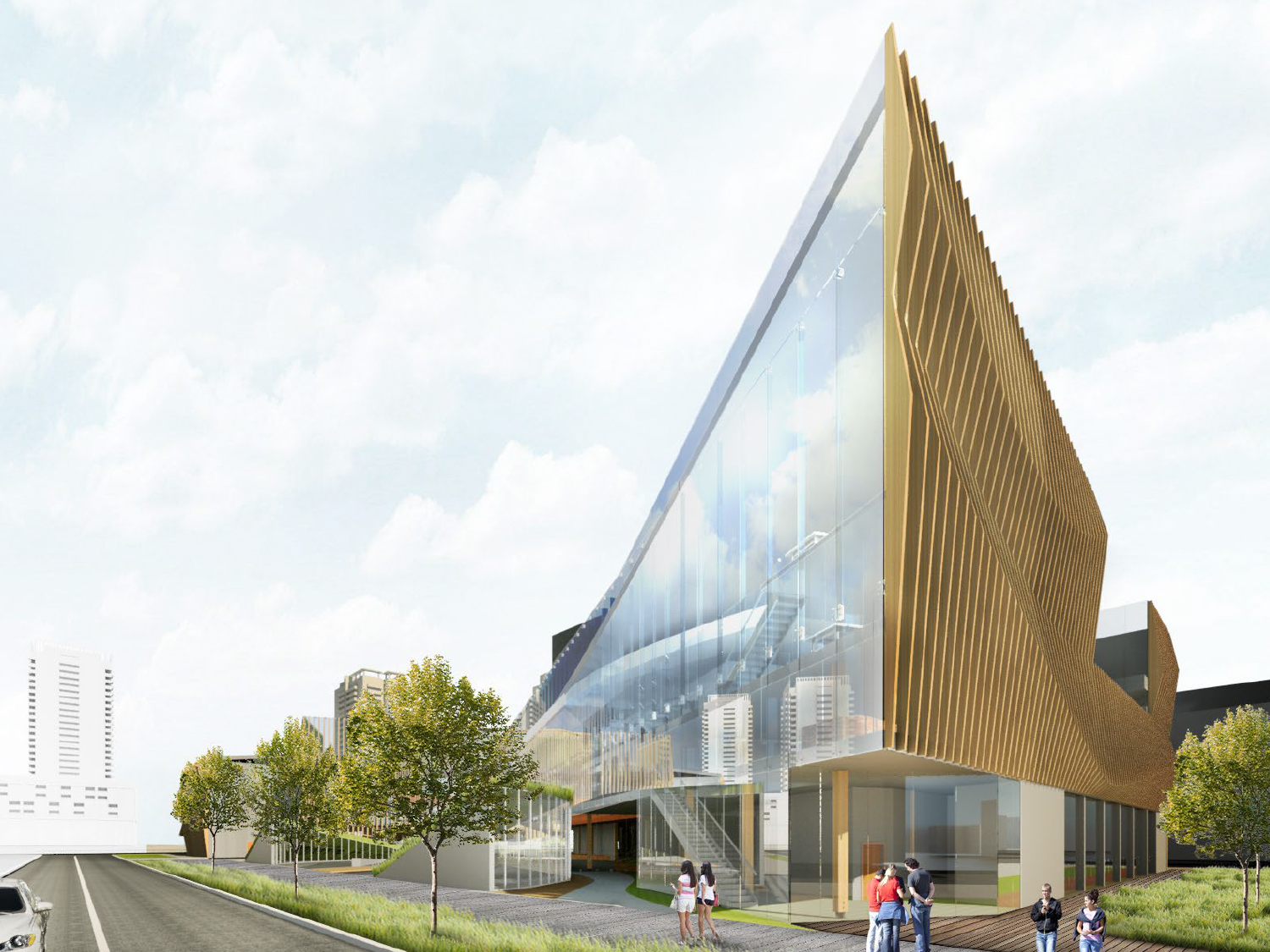
Cocoon
By: Christopher Pin
This community center manifests as a "cocoon" for healing. Through environmental psychology and a community-based approach, residents of the city are given an equitable opportunity for mental wellness and the ability to sustain a healthy mind. Spaces throughout the building allow for varied levels of solitude and privacy.